Dear reader: This article contains links to products and services that I may be compensated for, at no extra cost to you.
The east coast of Taiwan is a remote region of unparalleled beauty and the perfect place for a Taiwan road trip. In Part 1 of this guide, I covered the popular Yilan County and Hualien City regions, including Taroko Gorge, the east coast’s most famous attraction.
In this post, we will continue our road trip south from Hualien City through southern Hualien County, into Taitung County in southeastern Taiwan. You can find even more details about the region in my guide to visiting Taitung.
Finally, we will finish our journey in Pingtung county in Kenting, the idyllic national park at the southernmost tip of Taiwan and home to mainland Taiwan’s best beaches and resorts. After that, you may continue your journey on to the west coast of Taiwan, including Alishan, or Sun Moon Lake, or Taichung.
I’m going to cover three different route options below: the inland highway #9, coastal highway #11 through the East Rift Valley, and a lesser-known alternative route. These three routes will all meet up in Taitung City, from where you’ll again have two route choices for the final leg to Kenting.
I’ve done the trip from Hualien to Kenting multiple times by train, car, and scooter, and I’m excited to share all that I’ve learned about how to plan this awesome adventure along Taiwan’s famed east coast.
If you’re new to Taiwan, make sure to also have a glance at my 55 favorite places in Taiwan, recommended Taiwan itinerary, tips for living in Taiwan, and general Taiwan travel tips!
2024 Update: On April 3, 2024, a massive earthquake struck the Hualien region. The Suhua highway is heavily damaged and only open three times per day at this exact spot (open to small cars only 8 to 9 AM, 12-1 PM, and 5-7 PM), so it is more difficult but not impossible to drive from Yilan to Hualien (as described in Part 1 of this article).
Trains from Taipei to Hualien and onward to Taitung are running again. Hualien city has suffered moderate damage, while Taroko Gorge National Park is heavily damaged and closed until further notice. It is still possible to drive from Hualien to Taitung, as described in Part 2 of this article.
See my newest guide to the best things to do in Hualien which are still open.
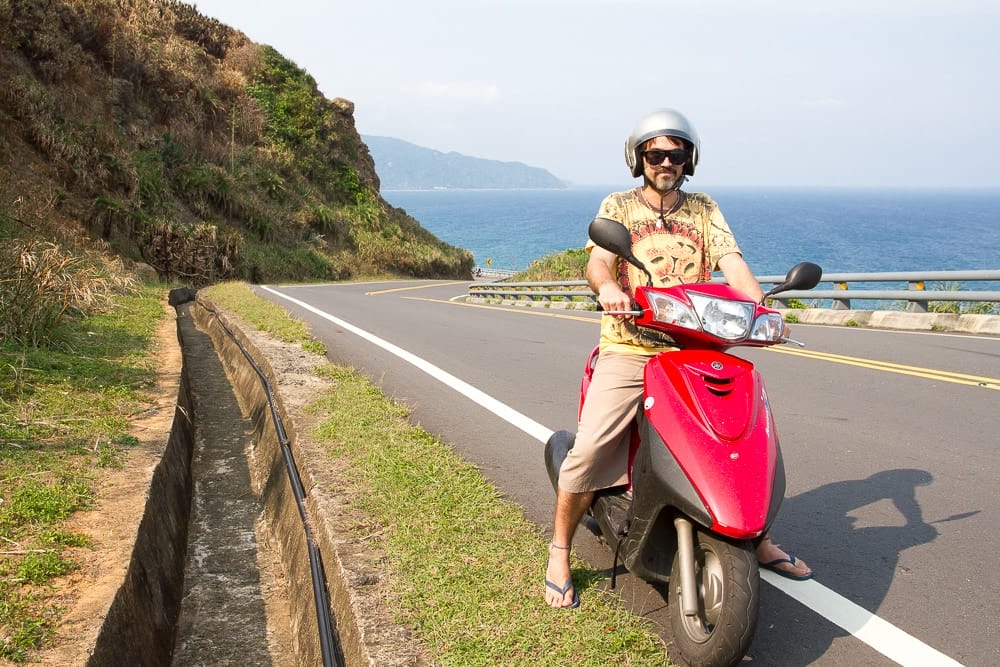
Table of Contents
General Tips for Traveling Down the East Coast
Here are some important things to know for planning your trip. Also see my Hualien travel guide and Taitung travel guide for more info about each of the counties we’ll be traversing.
When to Visit
This east coast road trip can be done in any month of the year. Some people (myself included) will find summer too hot, not to mention that chance of typhoons. You definitely don’t want to be anywhere near the east coast when a typhoon is coming!
Spring and fall are ideal. In winter, Hualien can be chilly and wet, but the further south you go, the warmer it gets. It’s even possible to swim in the ocean year-round at Dulan and Kenting.
Also heads up that if you’re visiting Taiwan in June, the plum monsoons can bring more rain to the east coast, while July, August, September, and October have the highest chance of typhoons, especially the middle two months.
See more information in my guide to the best time to visit Taiwan.
Getting to Hualien or Taitung
The fastest way to get to Hualien is by taking this flight from Taipei’s Songshan airport, which is right in the city. But if you factor in getting to and from the airport it’s hardly faster than taking the train. The fastest train, called the Puyuma/Taroko express (reserved seats only), travels from Taipei to Hualien in 2 hours, while regular trains take 2.5-3.5 hours and allow standing tickets.
For planning your time in Hualien, see my recommended travel itinerary for Hualien.
If you want to start your trip in Taitung instead, or return quickly to Taipei once you get there, you can get there by regular train in 3.5 to 5 hours, or you can take this flight from Taitung to Taipei.
Renting a Car, Scooter, or Bicycle
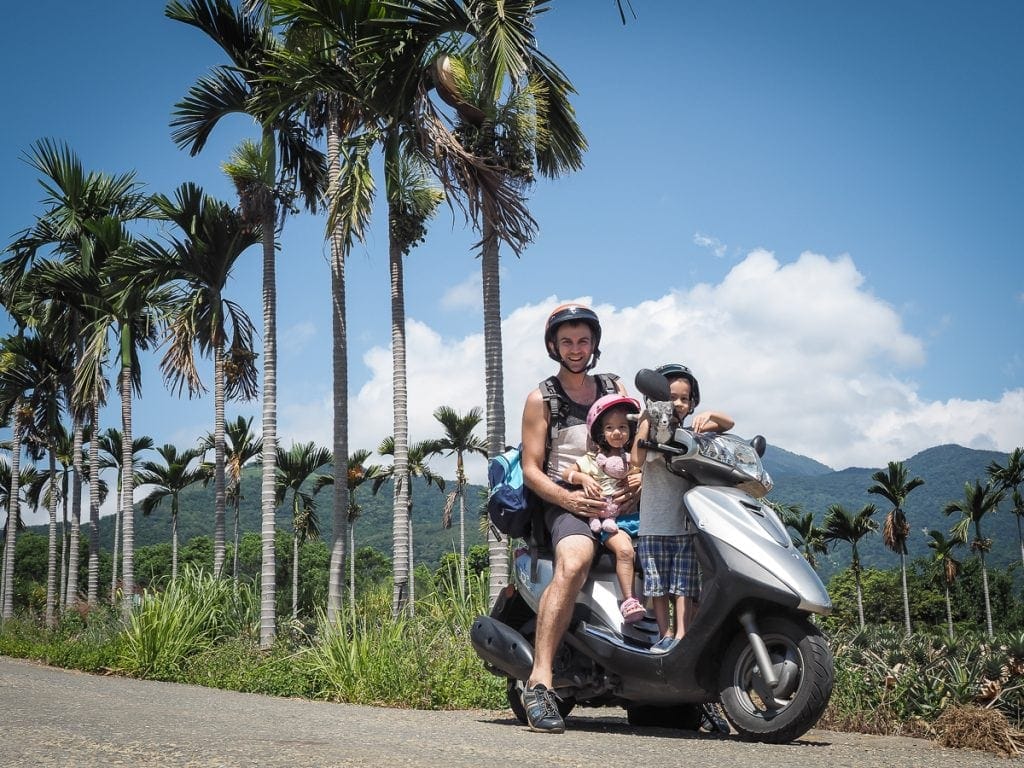
Few people would disagree that the best way to travel down the east coast of Taiwan is by driving. Many of the best cultural and scenic attractions are found off the main away or between cities, so you really need your own wheels.
Moreover, driving is the only way to travel down the coastal highway (highway 11), as there is no public transportation, as well as the backroads route from Taitung City to Kenting.
You can rent a scooter at Xincheng (Taroko Gorge) train station or at Hualien Station in Hualien City. For something more exhilarating, you can travel through the region by motocross (a kind of motorcycle).
Of course scooters are not for everyone. You can also rent a car here in Hualien. Read my guide to driving in Taiwan for everything you need to know. If you don’t feel comfortable driving yourself, you can also charter a private car with a driver.
If you want to cycle the east coast of Taiwan, this is not my specialty, but you can find loads of info here, here, here, or here. These are just a few of many blogs out there on this topic, so I’ll leave it to the cycling experts.
Using Public Transportation
There’s no public transportation running all the way down coastal highway 11. However, the TRA train line runs along highway 9 from Hualien to Taitung through the East Rift Valley. So if you’re planning to rely on public transportation only, trains will be your best friend! That are some local buses between some towns, but the train is more convenient and reliable.
To get from Taitung City to Kenting, the train crosses over to the west coast of Taiwan. You’ll get off at Fangliao station, from where you can catch a bus (1 hour) for the final leg to Kenting.
Another option is to catch the train between major towns, then hire a bicycle or scooter once you get there for exploring the area. For example, you can rent a scooter in Guangfu, Fenglin, Ruisui, or Yuli.
Approximate Train Times and Prices
- Taipei to Hualien: 2 hours (NTD 440) (this is the fastest train, some take 3-3.5 hours)
- Hualien to Yuli/Guanshan (towns I recommend as halfway stops between Hualien and Kenting): 1/2 hours (NTD 189/274)
- Yuli/Guanshan to Fangliao: 2/2.5 hours (NTD 377)
- Fangliao to Kenting (by bus): 1 hour (NTD 150)
Best Tours
IslandLife Taiwan is the best tour provider on the east coast of Taiwan. They provide everything from group or private tours to Taroko Gorge to arranging qualified, English speaking drivers up and down the whole east coast.
Explore their various tour offerings here, or contact them for a quote for a private driver.
Time Needed to Travel from Hualien to Kenting
In part 1 of this guide, I recommend visitors to budget one day for traveling from Taipei or Yilan to Hualien, one full day for visiting Taroko Gorge, and 1-2 more days for seeing the sights in Hualien City and/or doing some outdoors activities in the area. This means you need 3-4 days for Part 1 of this guide.
In this article, Part 2, you’ll need another 1-4 days to travel from Hualien City to Taitung or Kenting at the far southern tip of Taiwan. In theory, you can ride a scooter from Hualien City all the way to Kenting in 1 day, and I’ve done this before. It’s a long day on the road, and you won’t have much time for stops.
It’s much better to spend two days making this trip, spending the night somewhere in southern Hualien County or Taitung along the way. And if you want to fully experience both of the main highways, the coastal highway 11 going down, and return to Hualien on the inland highway 9, then two days for each, or four days total, would be much better. Below, I’ll cover all the best places on both highways to spend the night.
If you live in Taiwan, you could easily make countless weekend trips to this part of Taiwan, only focusing on one smaller area in Hualien or Taitung each time. With express trains making the journey from Taipei to Taitung in a mere 3.5 hours, weekend trips to the southeast have become all the more feasible.
The Route
Here is the route (in blue) covered by parts 1 and 2 of this guide, from Su Ao in Yilan County to Kenting in the far south.
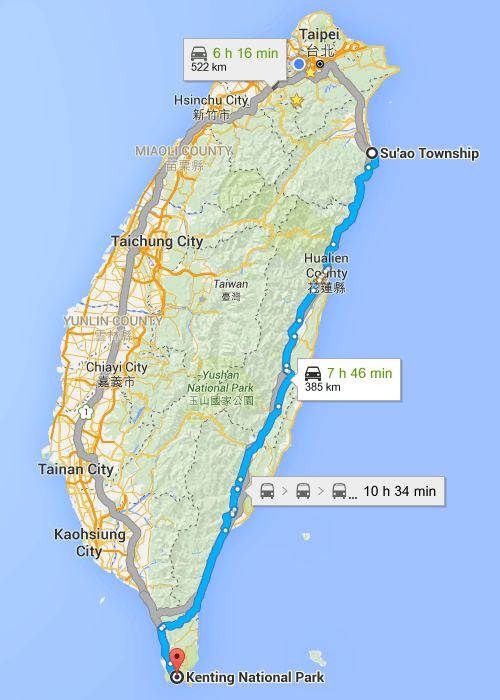
And here are the two main routes covered in this guide: highway 11 in blue, and highway 9 in gray.
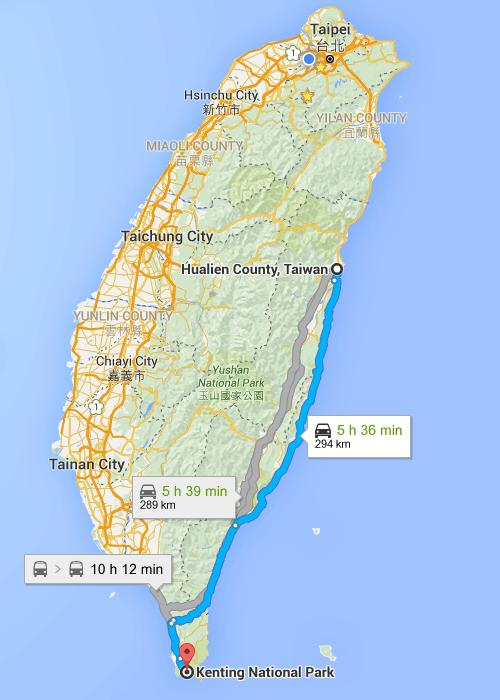
Highway #11 splits off from the #9 just south of Hualien City then follows the coast, with the two meeting up again in Taitung City. From Taitung to Kenting, the #9 continues south to Pingtung County, where it crosses to the west coast and meets up with Provincial highway 26 for the final leg down to Kenting.
The awesomeness of this is that you can take one highway down, and the other one up. There are also multiple roads connecting the two highways. Some are a straight shot, and others are slow, winding roads that take you through remote aboriginal territory.
To give you an idea of distances by scooter, when we recently traveled from Hualien to Kenting, we broke it up into two days but took some slower alternative routes (see below). We traveled about 8 hours each day, including several short stops. On the way back, we scootered all the way from Kenting to Hualien in one day, staying on the main highways mentioned above, with few stops, and did it in 10 hours.
It felt rushed but it was certainly doable, and this wasn’t a problem for us since our main goal was to spend several days in Kenting. If you actually want to see more of the stops along the way, I wouldn’t recommend this. I would break it up into at least two days in each direction.
Route #1: Highway 9 through the East Rift Valley
Provincial Highway 9 paves a way through the incredibly scenic East Rift Valley, officially the “Huatung (Hualian-Taitung) Scenic Area” (花東縱谷國家風景區). If you are traveling by public transportation, this route will be your only option.
This wide, rice-paddy and plain filled valley was formed by the collision of the Eurasian and Philippine tectonic plates, and is flanked by peaks of the Central Mountain Range and Coastal Range on either side. It stretches 180 kilometers from Hualien to Taitung and is the basin for several rivers spilling down from the highest peaks of Taiwan in the Central Mountain Range to the sea.
The below sights are arranged in the order that you will encounter them after departing from Hualien City.
Liyu (Carp) Lake (鯉魚潭)
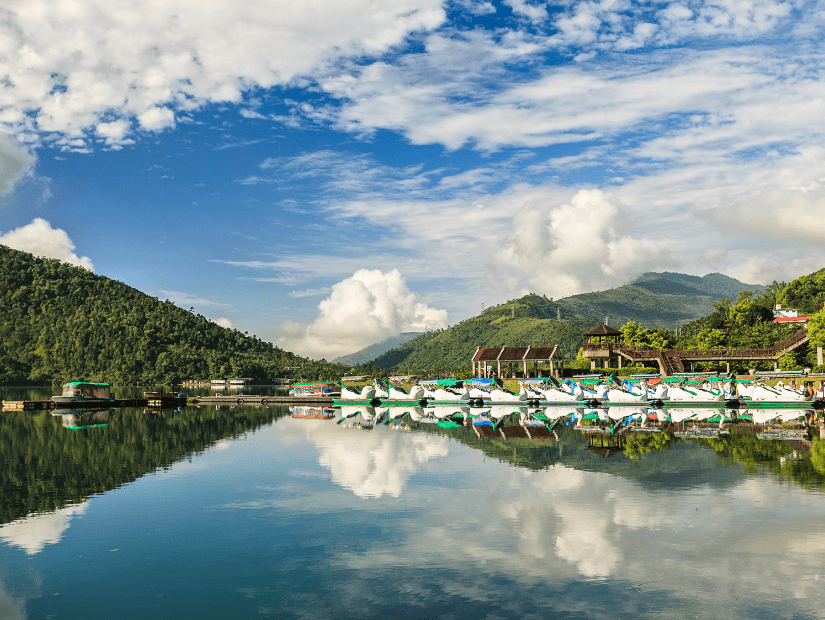
Shortly after leaving Hualien City, watch for signs for pretty Liyu (Carp) Lake (鯉魚潭) and . You can also visit Liyu Lake as a part of this cultural tour from Hualien. At Liyu lake, you can walk or rent a bicycle to ride around the lake.
Nearby, Chinan Forest Recreation Area (池南國家森林遊樂區) is another pretty stop with green surroundings and fresh air. There are some platforms with views looking down on Liyu Lake.
Also nearby, if you’ve got your own transportation, there are many spots you can go swimming in small rivers, such as here, here, or here.
Because it’s quite close to Hualien City, you could also do this as an easy day trip from Hualien.
Shoufeng (壽豐) & Fenglin (鳳林)
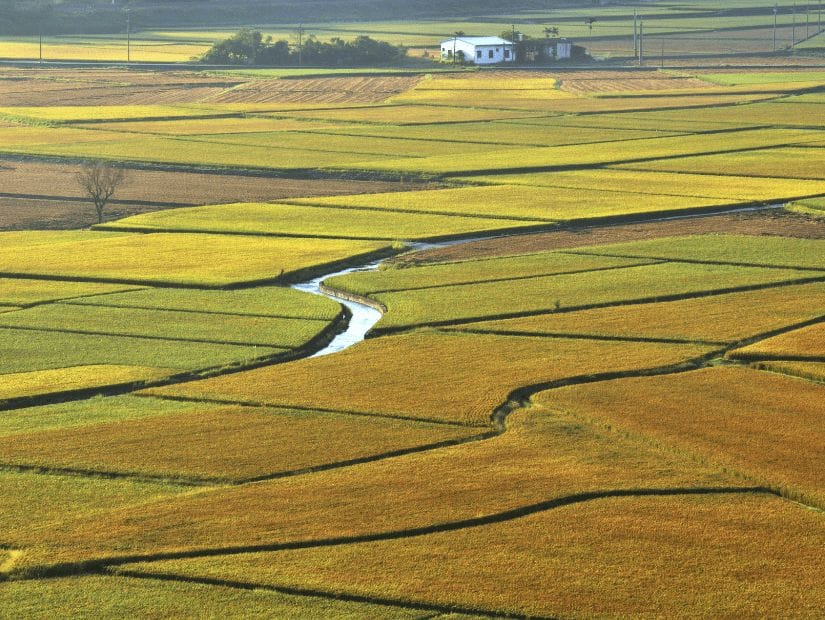
Continuing south, you will pass through two small, rural townships: Shoufeng and Fenglin. A top draw in Shoufeng is the fantasy-like Starbucks Promiseland, which overlooks a pond on the same grounds as Promiseland Resort. This is actually one is actually on Highway 11C, one road over from Highway 9, so it would be a small detour. This cute rose nursery and cafe is also on that road.
South of Shoufeng, Mr. Sam (山姆先生咖啡館) is another fairy-tale cafe that looks straight out of a children’s storybook.
Fenglin which was chosen as one of the world’s best “slow living” destinations by Cittaslow, and Italy-based organization (2 others are located in Miaoli and one in Chiayi). Honestly, there aren’t really any “must-sees” here (i think that’s the whole point). Explore the rural area or spend the night in a local guesthouse to find out what makes it so laid back.
With a scooter, you can ride up to Fenghuang Waterfall (鳳凰瀑布), good for a swim in summer. Just south of the waterfall, Lintianshan Mountain Forestry Center (林田山森林業文化園區), a ghost village and forestry center.
Guangfu and Fuyuan National Scenic Area
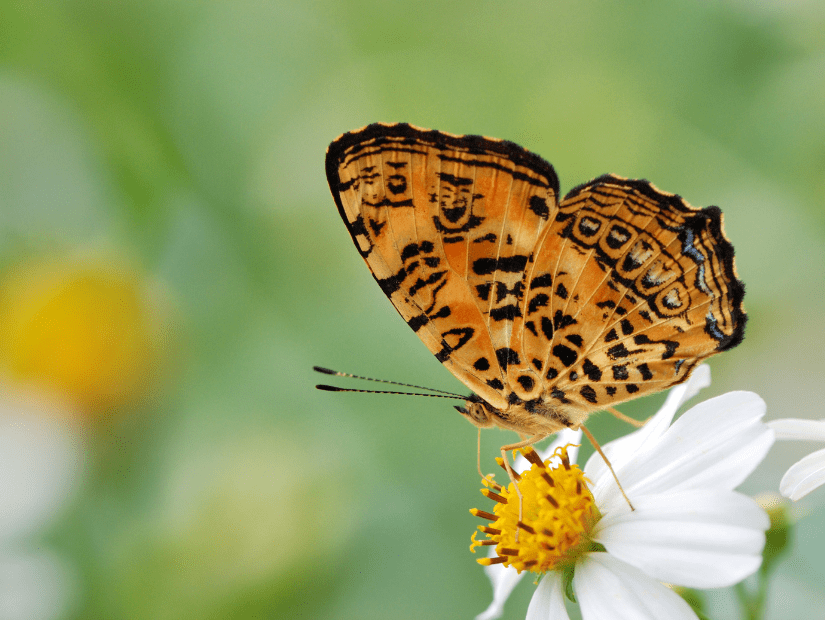
Next up, you’ll pass through the township of Guangfu (光復鄉). There are a few forest and wetland recreation parks in the area, but none really blew me away. A lot of travelers stop in at Guangfu Sugar Factory (光復糖廠冰棒) for their famous ice cream.
Fuyuan National Forest Recreation Area (富源國家森林遊樂區), in neighborhing Wanrong Township, is famous for its swarms of butterflies, which can be seen here in spring in summer. However, we didn’t have much luck when we visited in early spring one year, so I would only suggest coming here in late spring or summer.
The recreation area also has a 2-hour return trail to two suspension bridges and a tall waterfall, as well as hot springs here near the entrance.
Ruisui Hot Spring
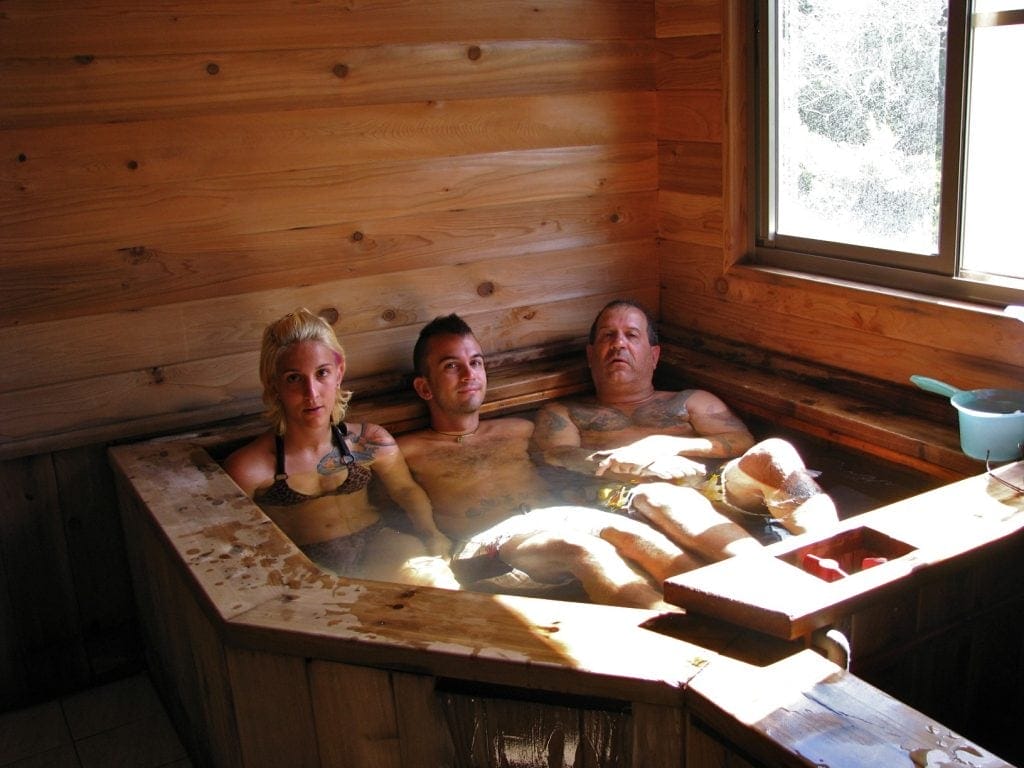
Further along, you’ll reach Ruisui Hot Spring (瑞穗溫泉), which, like most hot spring towns in Taiwan, is mainly a collection of hotels offering a variety of bathing facilities. It’s a great experience to spend the night in a hot spring hotel with your own private tub. This is a great place to break your journey, or a fun place to stay if you’ve come to town for the rafting (see below)
Ruisui Sunshine B&B (see on Booking / Agoda / TripAdvisor) offers beautiful rooms with a private tub on your own balcony complete with mountain views.
A cheaper choice that also has private tubs in your room plus a big public hot spring is Coco’s Hot Spring Hotel (see on Booking / Agoda / TripAdvisor).
Rafting at Hsiukuluan River (Xiuguluan River or 秀姑巒溪 )
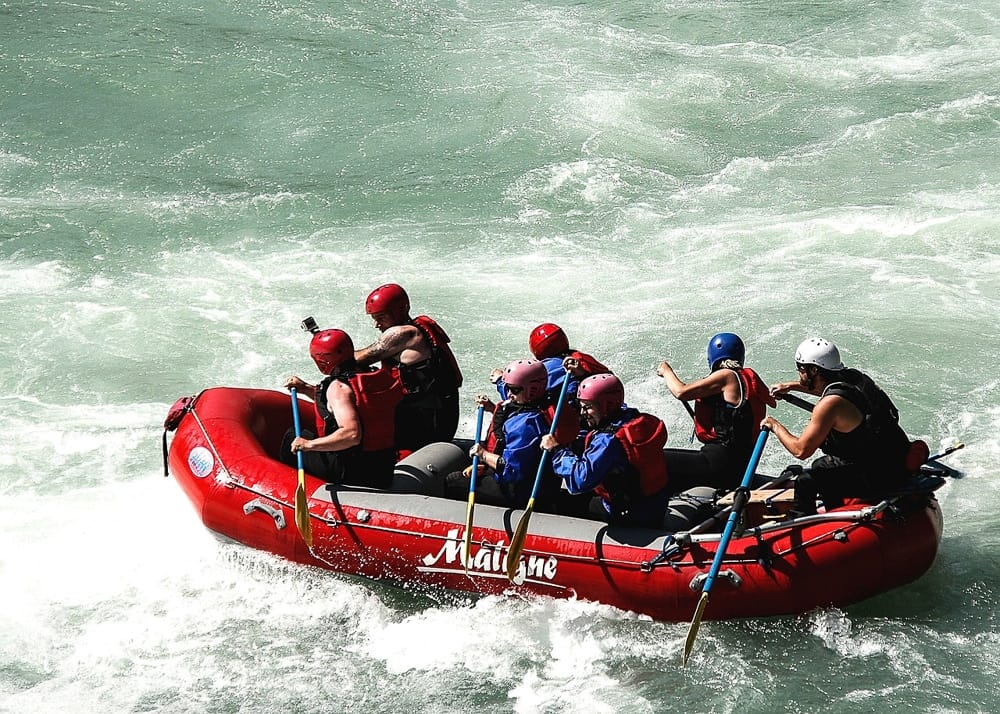
Some of the best white rafting in Taiwan can be had at Hsiukuluan River (秀姑巒溪) near Ruisui. This rafting tour offers pickup from either Hualien City or Ruisui.
Yuli, Hualien
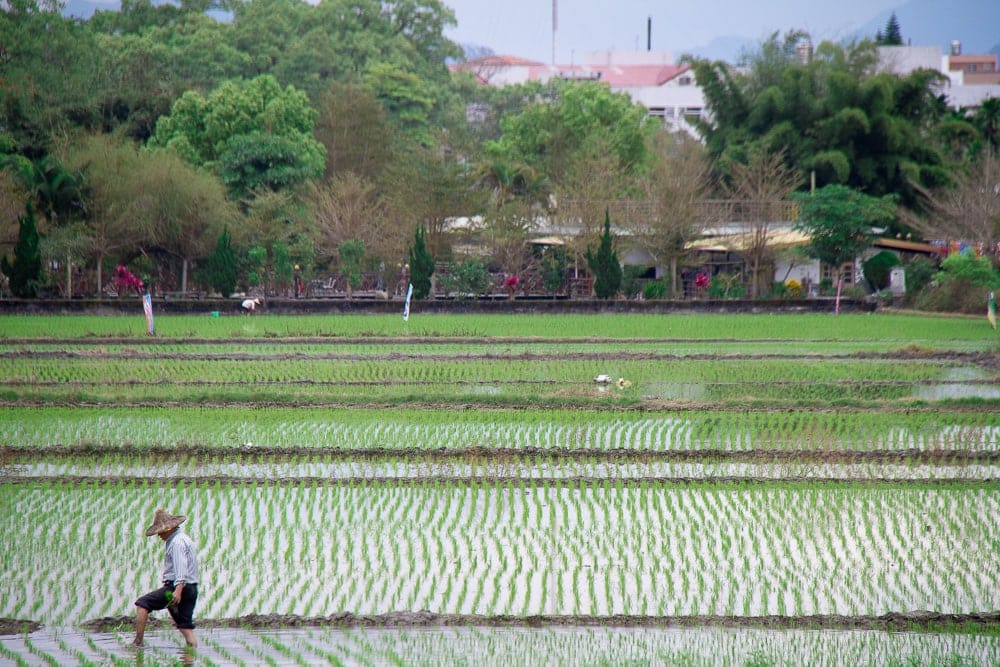
Yuli, as well as the next three towns in Taitung County (Chishang, Guanshan or Luye) are great options for breaking up your journey from Hualien to Kenting and spending the night. If I could only choose one on a short trip to Taiwan, I’d probably go for Chishang, but all describe all four towns below.
All four of these relaxed towns are surrounded by the stunning scenery of the East Rift Valley and are great bases from which you can explore the greater Hualien and Taitung region, including Sixty Stone Mountain, the Platform of the Three Immortals, Antong Hot Spring, and Dulan.
These towns are some of my favorite places in all of Taiwan. In each of them, you can find simple hotels, often overlooking or surrounded by rice paddies. Hire a bicycle or scooter and get out to explore the surrounding countryside. I guarantee you will fall in love with this part of Taiwan. If you have the time or live in Taiwan, spend a whole weekend in any one of them, as my friends and I have done several times.
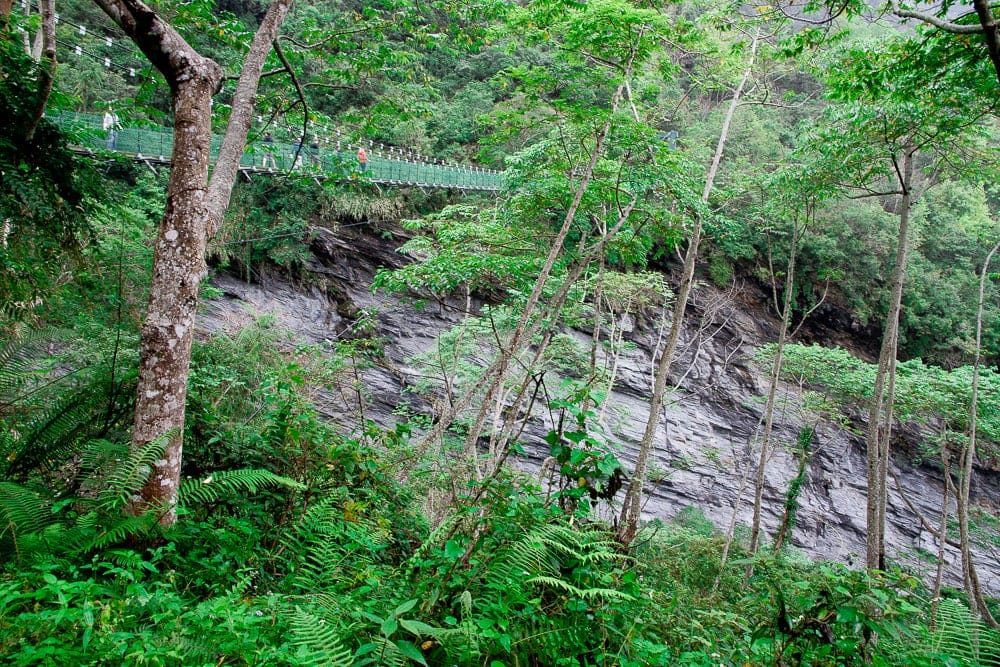
Yuli itself is a small countryside town. Some of the best places to visit around it include the spectacular Nan An Waterfall (南安瀑布), and just beyond that you can walk the first few kilometers of the Walami Trail (瓦拉米古道) without a permit.
You’ll need one to follow the multi-day trek which connects all the way to Yushan National Park in Central Taiwan. When we hiked the trail, we encountered a huge troupe of macaques!
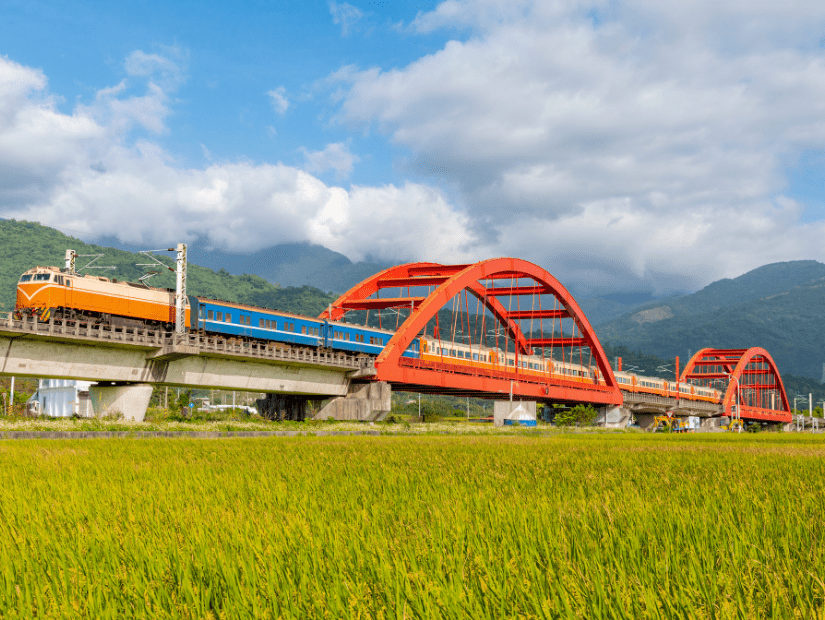
If you’re exploring the area by scooter, you can even go as far as Sanxiantai (an amazing bridge on the coast) on coastal Highway 11 in one day, which we did one time. Just follow Highway 30, which connects highway 9 with the coast.
Wisdom Garden (see on Booking / Agoda / TripAdvisor) is the best accomodation in Yuli. The owners are super friendly and will even pick you up from the station.
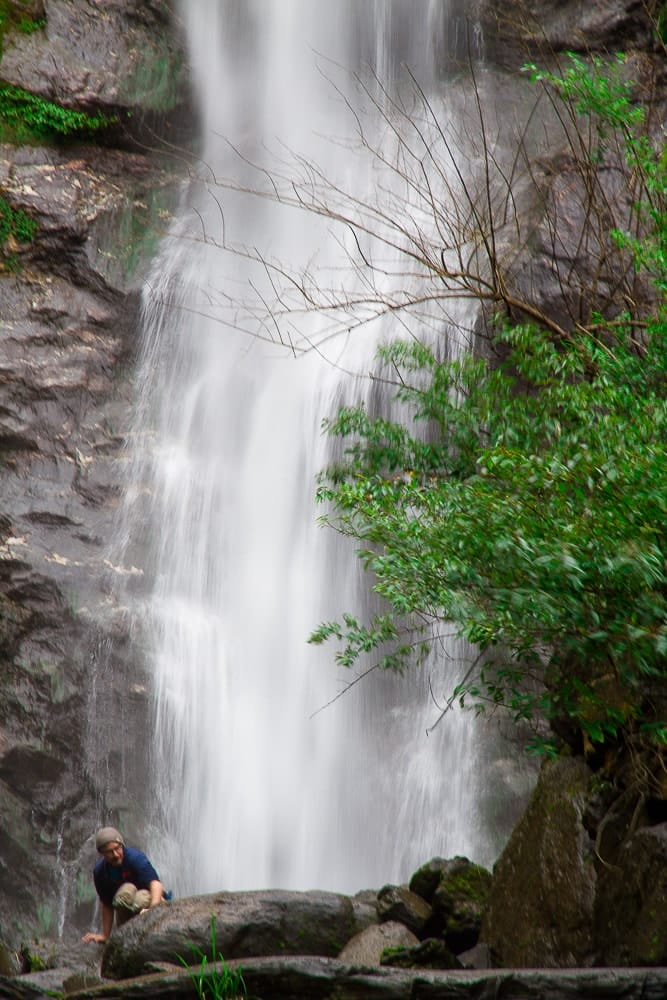
Antong Hot Spring
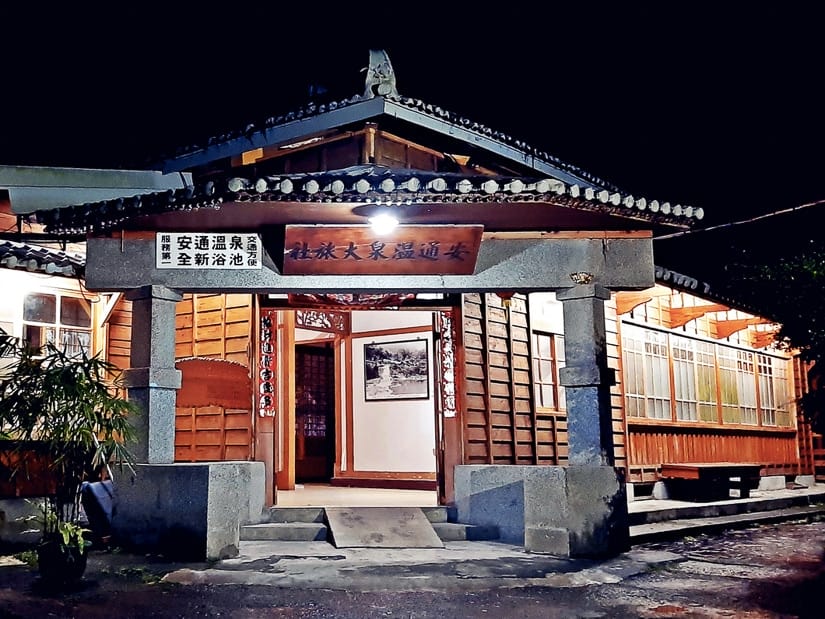
If you’re spending the night in Yuli, it’s a quick hop over to Antong Hot Spring, on a small highway connecting highways 9 and 11 on the coast.
If you’re spending the night in Yuli, it’s a quick hop over to Antong Hot Spring, on a small highway connecting highways 9 and 11 on the coast.
The facilities at Antong Hot Spring Hotel (see on Booking / Agoda / TripAdvisor) are a little dated, but it’s always nice to go for a hot soak after a day of exploration. There are a few other hotels with hot spring in town and you can find a spot with natural springs beside the river.
Sixty Stone Mountain (Liushishishan or 六十石山)
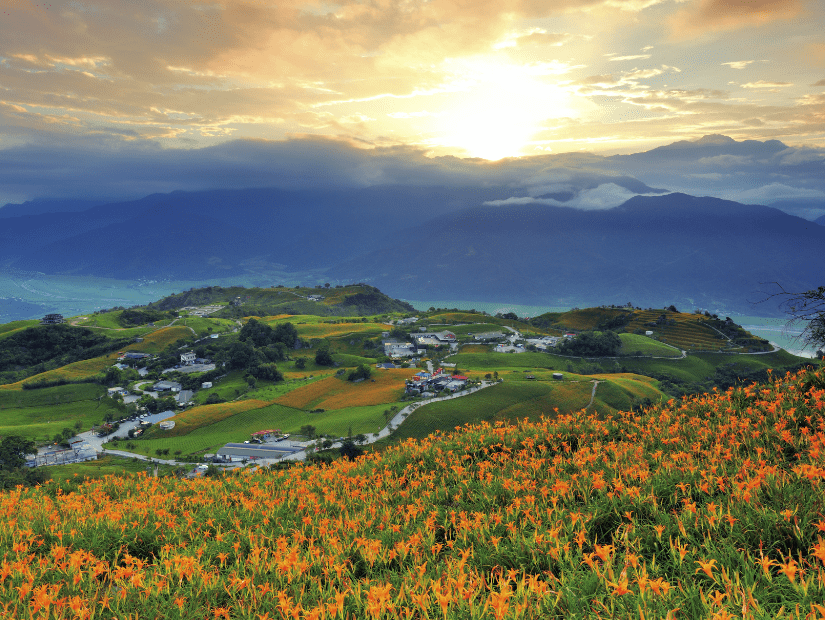
A short ride south from Yuli on Highway 9 will also bring you to the entrance to Sixty Stone Mountain (六十石山), a 952-meter peak that is covered with tiger (day) lilies from August to September.
The road up the mountain can be clogged with traffic when the lilies are in bloom (there may even be traffic controls or designated hours you can drive in), but it wasn’t actually too bad when we visited on a summer weekday, and was definitely worth the detour. Keep an eye out for local farms/shops selling lily ice cream in season.
If you don’t have your own wheels, you can hire a chartered car from Hualien to Sixty Stone Mountain or take this tour from Taitung City.
Tropic of Cancer Marker Park (北回歸線標誌公園)
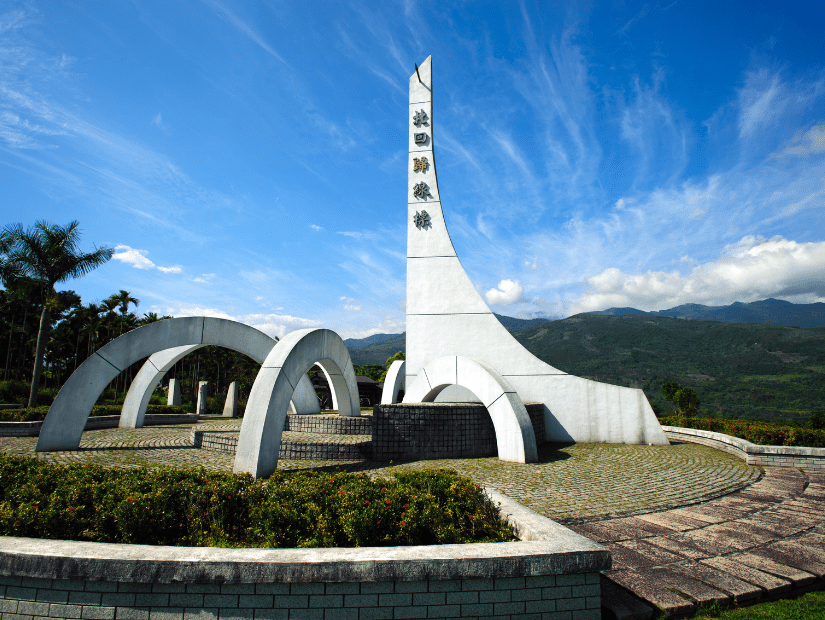
The final stop you’ll make along highway 9 before crossing the border into Taitung County is the Tropic of Cancer Marker Park, where you can make a quick stop for mandatory photo ops.
Lisong Hot Spring
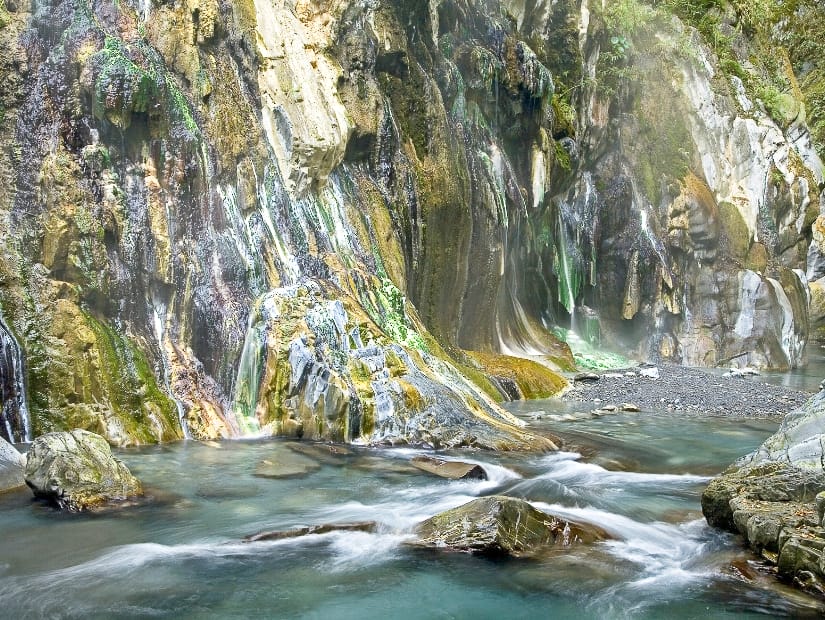
Wild hot spring lovers will want to make a detour up the South Cross Island Highway (Provincial Highway #20) to seek out remote Lisong Hot Spring, one of the best hot springs in all of Taiwan.
However, you’ll need to budget a whole day for the adventure, including driving time and the 3-4 hours (return) needed to hike to it.
Chishang (池上鄉), Taitung
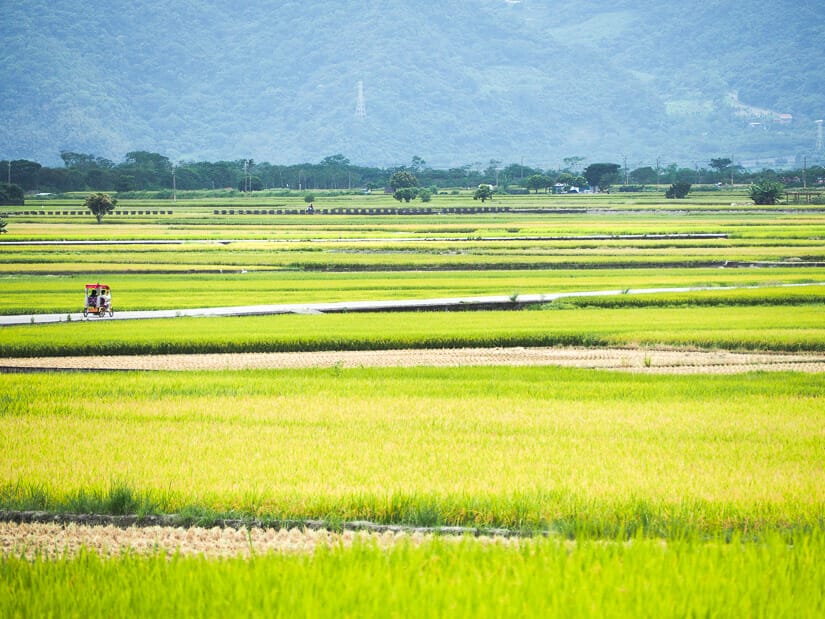
Chishang is the first township you will enter after crossing the Hualien-Taitung border. Along with Yuli (above) and Guanshan and Luye (below), it’s another great place to spend the night in the beautiful East Rift Valley. You can read my more detailed guide to Chishang and Mr. Brown Avenue here.
This is probably my top recommended choice for people visiting Taiwan for a short time. However, if you prefer to avoid touristy spots, you might choose one of the others instead .
Chishang is especially famous for its cycling paths amidst the rice paddies. Mr. Brown Avenue, or Brown Boulevard (池上伯朗大道) is the most famous of them all, and people come from all over the country to cycle there, mainly because a famous EVA airlines commercial was filmed there. You can also cycle around Dapo Pond (大坡池) in town.
I recommend the guesthouse we stayed at, Good Harvest B&B (台東池上民宿-莊稼熟了1館) (see on Booking / Agoda / TripAdvisor). It had unique rooms with a Taitung flavor and views of the rice paddies.
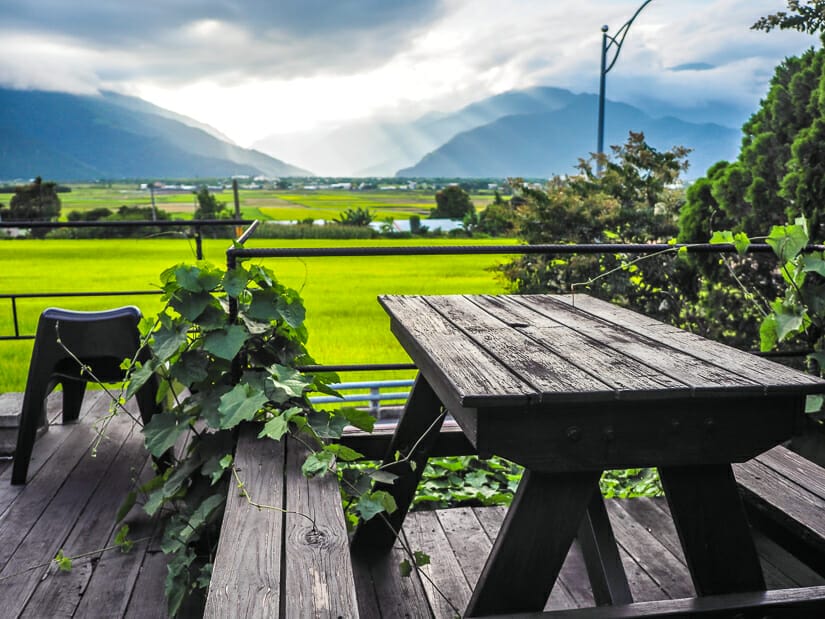
Guanshan, Taitung
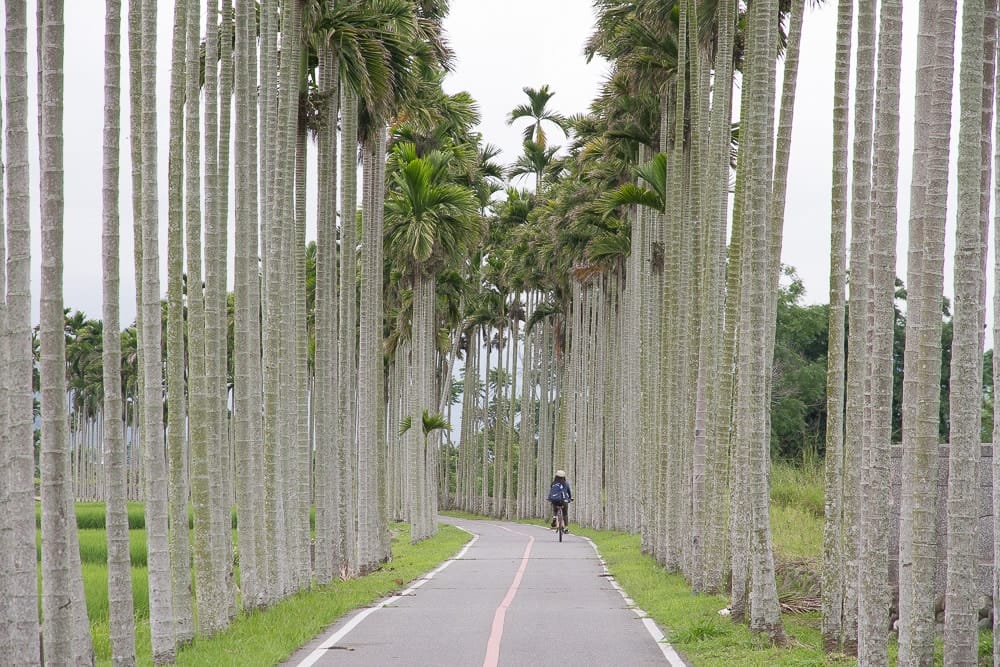
After Chishang, the township of Guanshan (關山) features similar scenery, and is yet another place you could spend the night for exploring the area. These days, Guanshan is overshadowed by Chishang as a cycling destination, but Guanshan was actually had Taiwan’s first dedicated cycling path, the Guanshan Town Circle Bicycle Path, which was built in 1997.
This very easy 15.2 kilometer path takes in the bucolic scenery that you’ve come for and features the aisle of betel palms, a section flanked by areca palms on either side of the path. While Chishang is trendier among young people these days, some Taiwanese families or older people still prefer Guanshan.
Bicycles are on hire everywhere in town, but the best ones are found at the Giant shop, housed in the historic railway station 60 meters to the right after you exit the modern station.
Guanshan is also one of several places in Taiwan that has ‘famous’ lunchboxes (便當). You won’t notice much different about them, except this one’s claim to fame is the rice itself, which is supposed to be the best in Taiwan due to the purity of the water in the region. You can find them just in front of the train station on the left side of the road at Guanshan Bento (源昌關山便當).
A good budget homestay in Guanshan is Erfen De Homestay (see on Booking / Agoda), just down the road from the train station, which has private rooms with mountain views.
Tea Tian Villa (see on Booking / TripAdvisor) is a good choice for families, and also has balconies with rice paddy views. Blue Style Resort (see on Booking) is another decent option, overlooking greenery on the edge of (the very small) town.
Luye (鹿野), Taitung
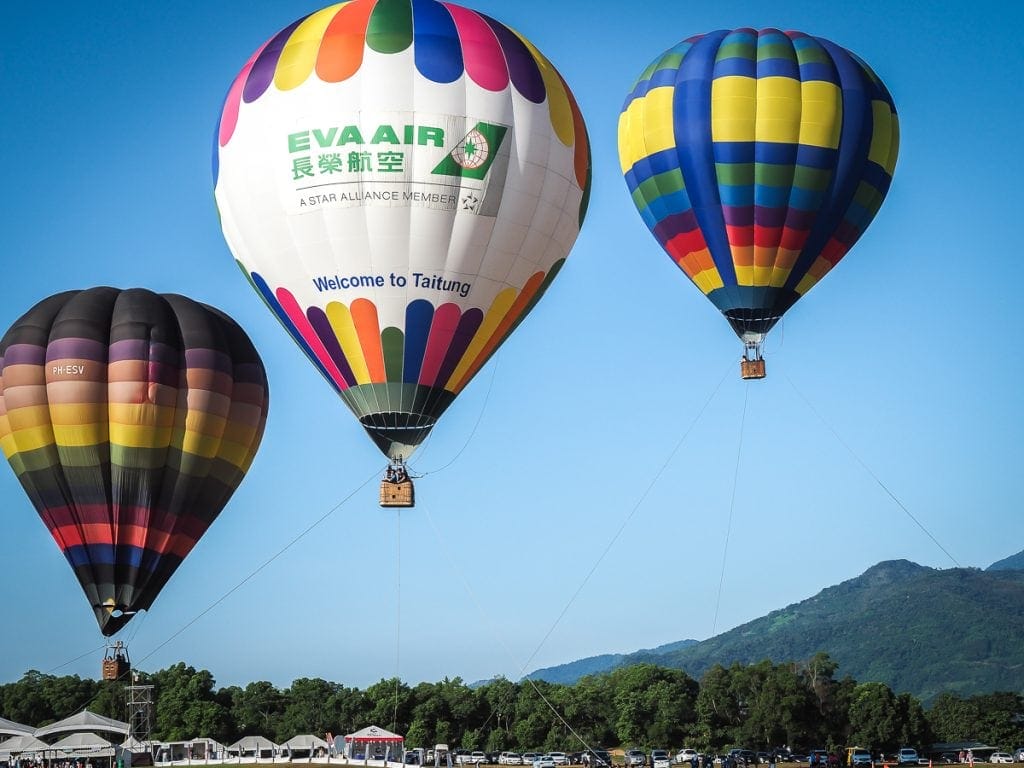
Luye (鹿野) is the final stop worth considering spending the night in to break up your journey from Hualien to Kenting. Luye is famous for its hot air balloon festival, the Taiwan International Balloon Fiesta (台灣熱氣球嘉年華), which will take place there every summer. Read my dedicated post about Luye and the Taitung International Balloon Festival for more details.
Even if you don’t catch the balloon festival, Luye is an interesting area to explore anytime of year. The area around the train station is mostly rural. A grid of roads divide fruit and tea plantations, and it’s a gorgeous and laid back area to explore by bike or scooter.
The Taitung hot air balloon festival doesn’t take place there, but up on the Luye Plateau (鹿野高台), which is also beautiful and perfect for going for a ride. By scooter, you’ll need about 15 minutes to get up there. During the hot air balloon festival, there are shuttle buses from town.
You can also visit Luye by in a half day or or full day trip private car trip from Taitung, or as a part of this day tour.
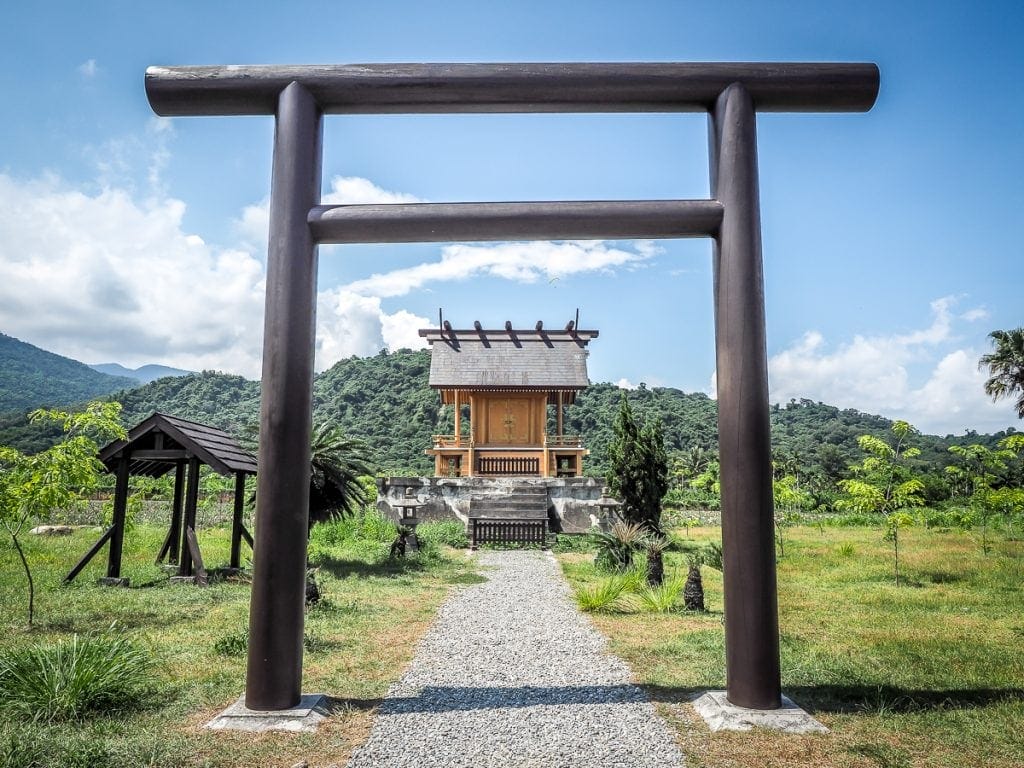
For saying in Luye, there are cheap dorms at Jamie’s Guesthouse (see on Booking / Agoda / TripAdvisor), a great place to meet people, while Shan Yan (see on Booking / TripAdvisor) is a decent B&B option.
If you want to stay up on the Luye Plateau like we did, you can try Lutai Winery (see on Booking / Agoda / TripAdvisor) or Bell Cottage B&B (see on Booking / Agoda / TripAdvisor).
Bunun Leisure Farm
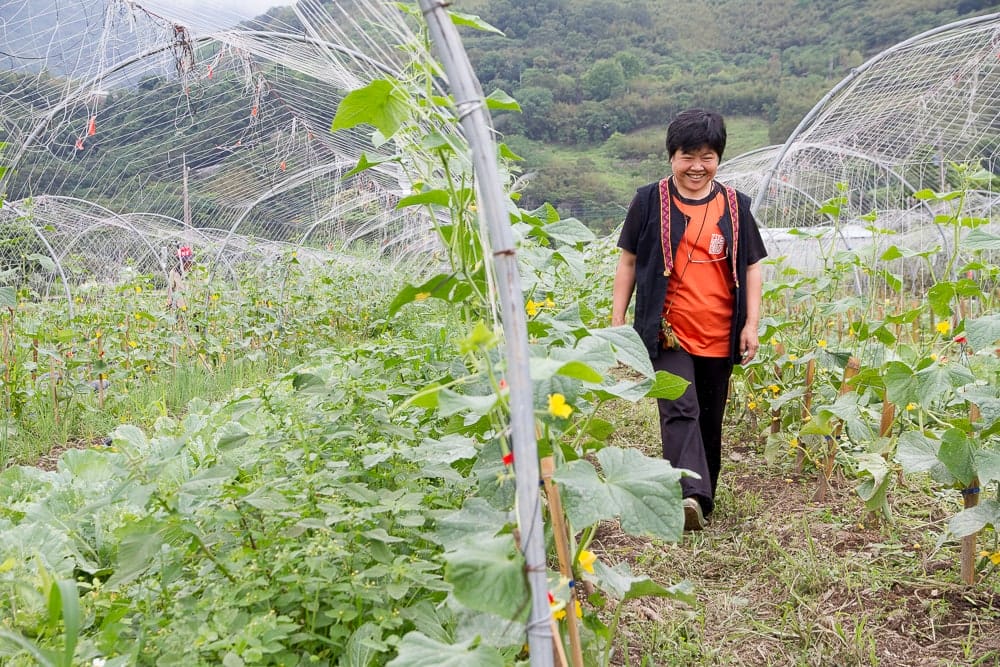
On one trip doing research for Travel in Taiwan magazine, I stayed at the Bunun Leisure Farm (布農部落休閒農場, official website / TripAdvisor) in Yanping Township, a short drive from Luye. The resort is entirely run by the Bunun tribe and is a true success story of a local initiative bringing employment and empowerment to the local aboriginal people.
Over 100 local villagers are employed here, and there are daily song and dance performances, traditional weaving demonstrations, archery, DIY activities for kids, an aboriginal restaurant, gift shop, organic farm, and plenty of produce and food items produced on site for sale.
The view from the café patio over the adjacent valley is stunning. Entry is NTD150, 100 of which can go towards any purchase. Cabins on the farm go for 2400 per night (3000 on Saturday) and pickup from Luye Train Station is free.
Bunun Leisure farm is also a good place to participate in the Bunun Ear Shooting Festival. See more info in my guide to Taiwan’s traditional festivals.
I haven’t been, but the Lonely Planet Taiwan also recommends exploring off-the-beaten track and highly scenic Country Road 197 in the Luye vicinity, including the Liji Badlands, by bicycle or scooter.
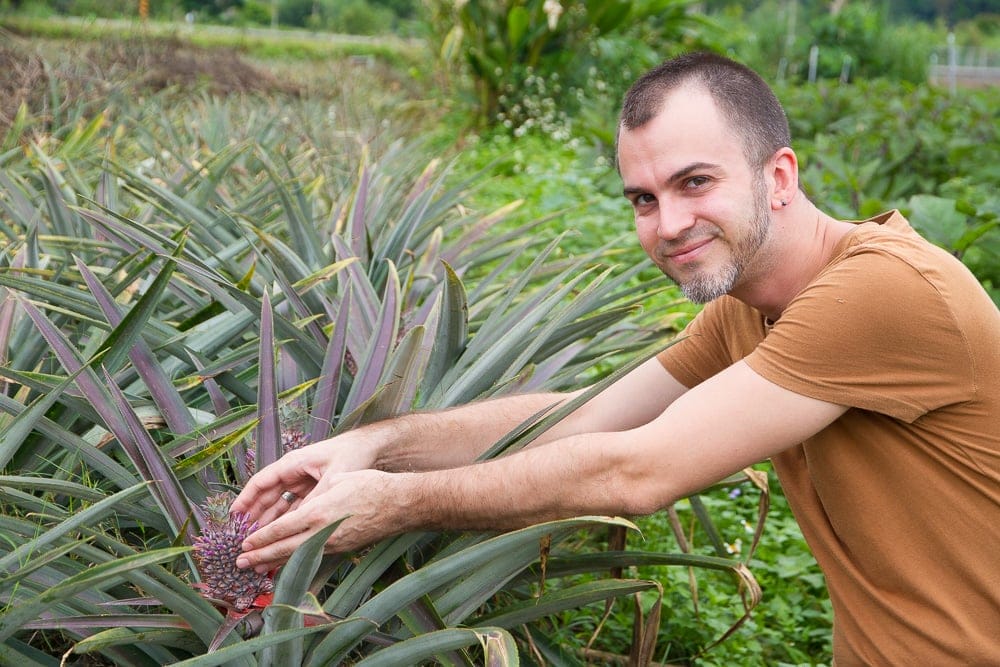
Route #2: Highway 11 Along the Coast
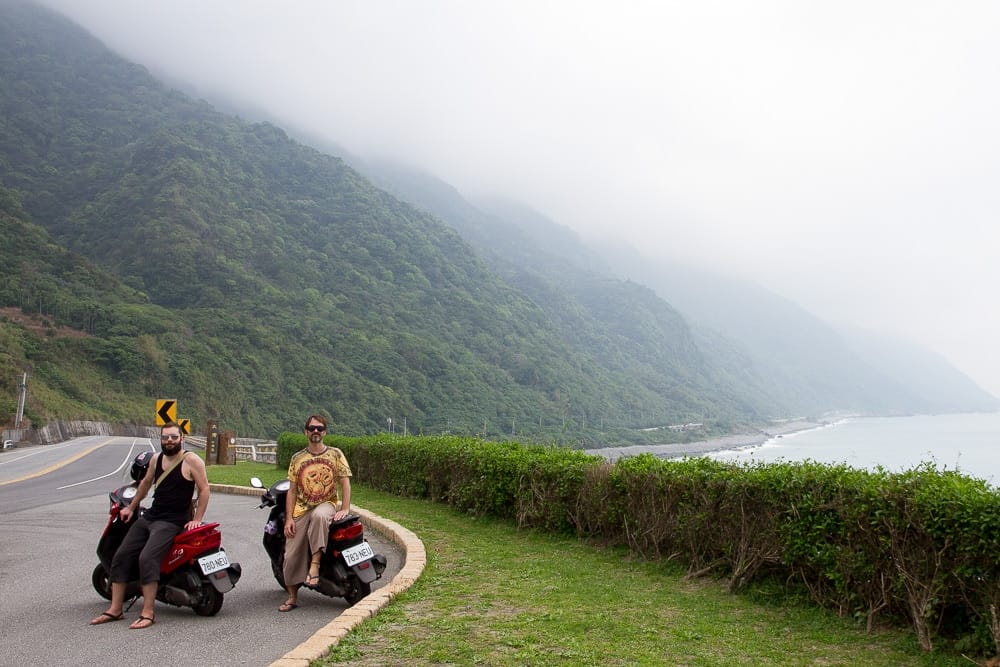
The second option for traveling from Hualien to Taitung is by taking Highway 11 along the coast. This winding, scenic drive offers plenty of coastal views, but there is no public transportation available covering the whole route.
In Ji’an Township (吉安鄉), south of Hualien City, highway 11 splits off from highway 9. Just across the Hualien Bridge is the official start of the East Coast National Scenic Area (東部海岸國家風景區) and almost immediately you’ll be driving right along the coast. The following are the sights that you will encounter along the way.
Starbucks Container Store
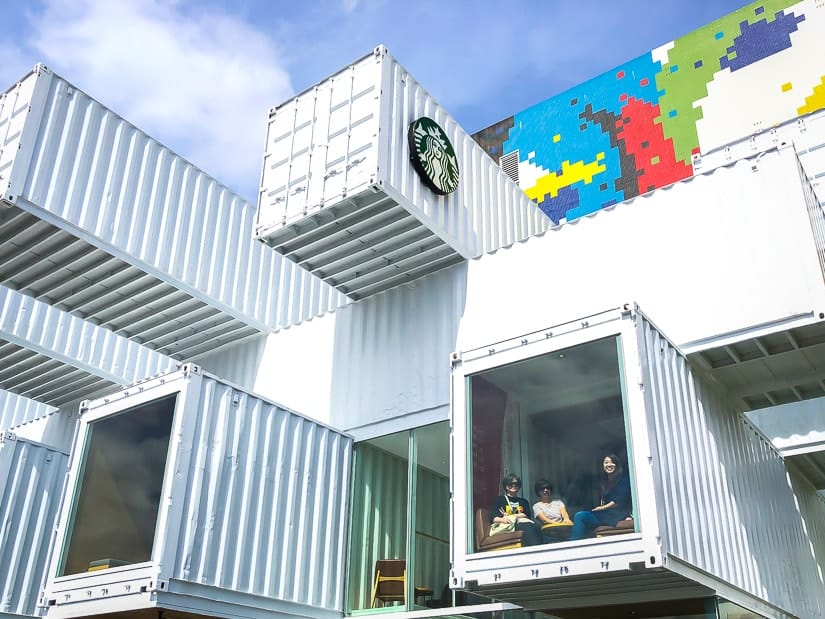
As you drive south out of Hualien City on Highway 11, don’t pass up the chance to stop at Taiwan’s most unique Starbucks, built with 29 shipping containers. It’s just off Highway 11 in Ji’an township, before the highway reaches the cost. Search for 星巴克 (洄瀾門市) to find it on GoogleMaps.
Farglory Ocean Park (遠雄海洋公園)

Just after Highway 11 reaches the coast, you’ll reach Farglory Ocean Park, the largest of Taiwan’s theme parks that has a marine focus. Although it’s not my cup of tea, and I’d rather sea dolphins in the wild such as on this dolphin and whale watching tour, Farglory is quite popular.
You can save money on your tickets if you book them online.
15 minutes’ drive south of Farglory, there’s a small aboriginal park called 水璉飛魚市集 where you can try archery here.
Baqi Observatory (芭崎休息區)
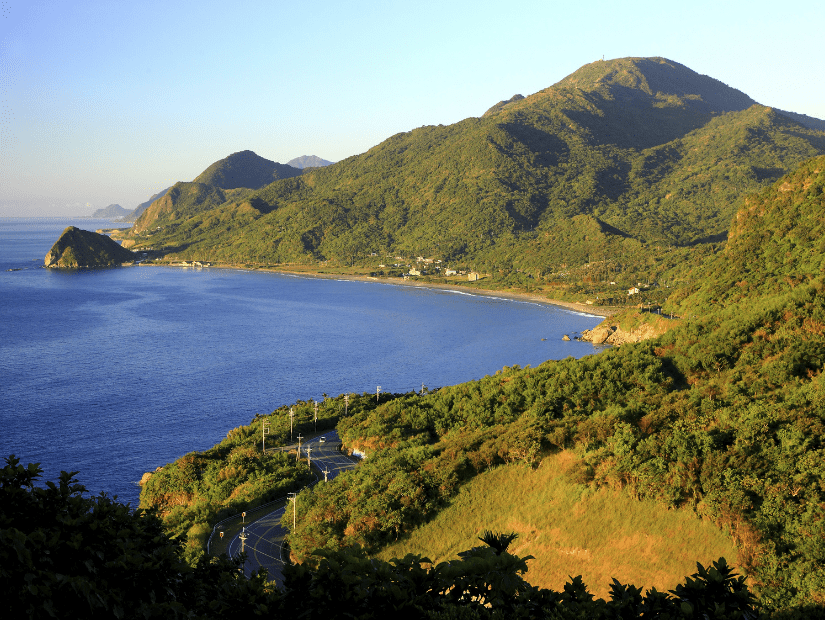
Around kilometer 12, watch for Yanliao Henan Temple (鹽寮和南寺), which features a 15-meter Kuanyin statue. Soon after this, the highway ascends, offering a sweeping view over Jici/Jiqi beach (磯崎) from the Baqi Rest Stop (芭崎休息區).
Years ago, Jici had a good campground with cool cabins on the beach, but nowadays it looks like it has seen better todays. You have to pay TWD100 to enter Jici Swimming Center (磯崎海水浴場), and swimming is only permitted when the seas aren’t too rough. It’s one of the few places along the entire east coast where swimming is ever permitted, due to the very strong currents and quick dropoff.
Dashibishan Trail and Qinbuzhizi/Fengbin Skywalk
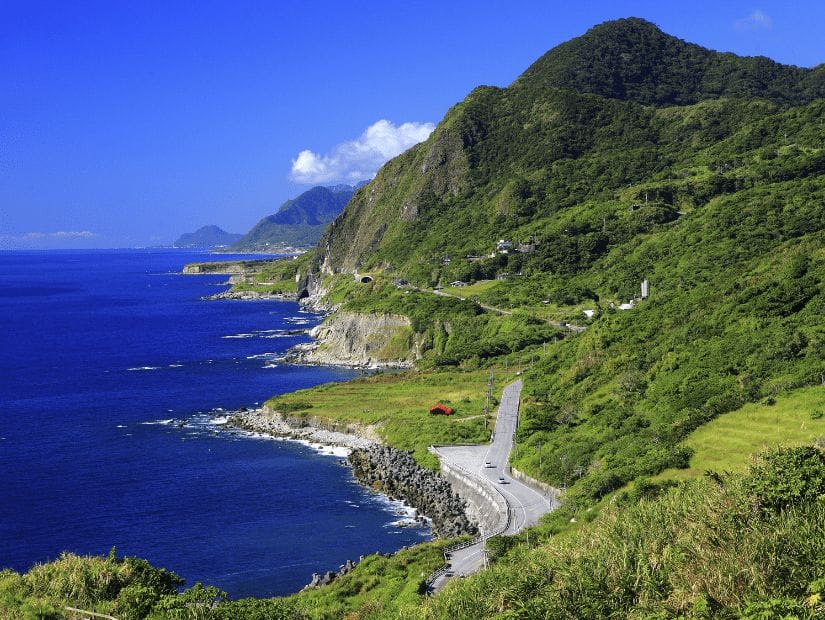
After Jici, the next points of interest are two coastal walkways: Dashibishan (大石鼻山步道) and further down, Qinbuzhizi (親不知子海上古道), also known as Fengbin Skywalk (豐濱天空步道).
Dashibishan is a series of wooden stairs out on a cape looking out over Jici beach. Fengbin Skywalk is a cliff-hugging walk with glass floors in one section – a little scary! It’s not very long, and there’s a small fee to walk out on it.
Xinshe Rice Terrace (新社梯田)
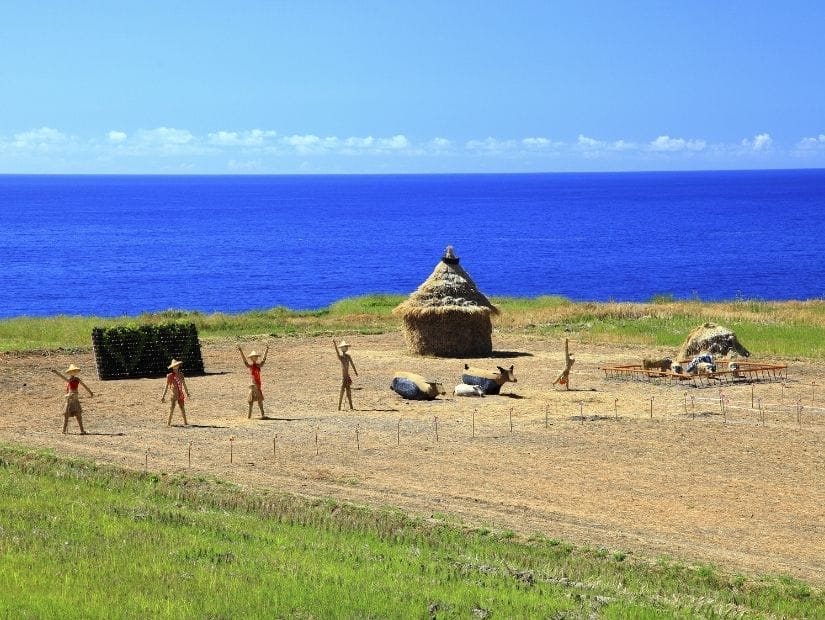
Xinshe is a area of picturesque terraced rice fields backed by the sea. They weren’t there yet in the picture taken above, but today Xinshe has become a new hot spot with the addition of some large statues, huts, and even a swing made of straw.
No Instagramer passes by here without some mandatory shots sitting on the swing, with the fields and ocean in the background.
Shitiping (石梯坪)
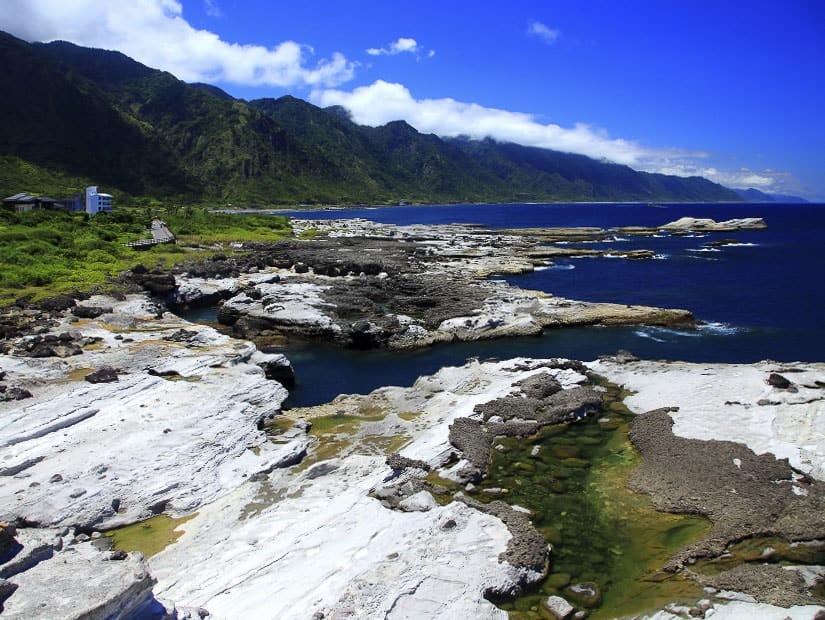
The Shitiping Scenic Recreation Area (石梯坪遊憩風景區) is the perfect spot to stop and actually get out on the rocky coast, with lots of pools and crevices to explore. See what kind of ocean creatures you can spot in the pools of water!
Platform of the Three Immortals (Sanxiantai or 三仙台), Taitung

Just after passing the Tropic of Cancer market, you’ll enter Taitung county. The first notable stop is the Baxiandong Archaeological Site (八仙洞), which unfortunately is closed for the time being.
The first place that you can actually visit, and absolutely can’t miss, is the Platform of the Three Immortals. This 320-meter curving bridge to a small volcanic island is touristy but visually stunning, and you could easily spend an hour or two here admiring it from different angles on the rocky beaches or walking along the bridge itself. It is one of Taiwan’s most recognizable landmarks.
Even if you don’t drive the whole coastal highway, can visit the Platform of the Three Immortals on this day tour from Taitung City, by chartering a private car from Taitung, or by hiring a scooter in Yuli on Highway 9 (train access) and driving there.
After being closed for repairs for over a year, Sanxiantai finally reopened to the public in 2024.
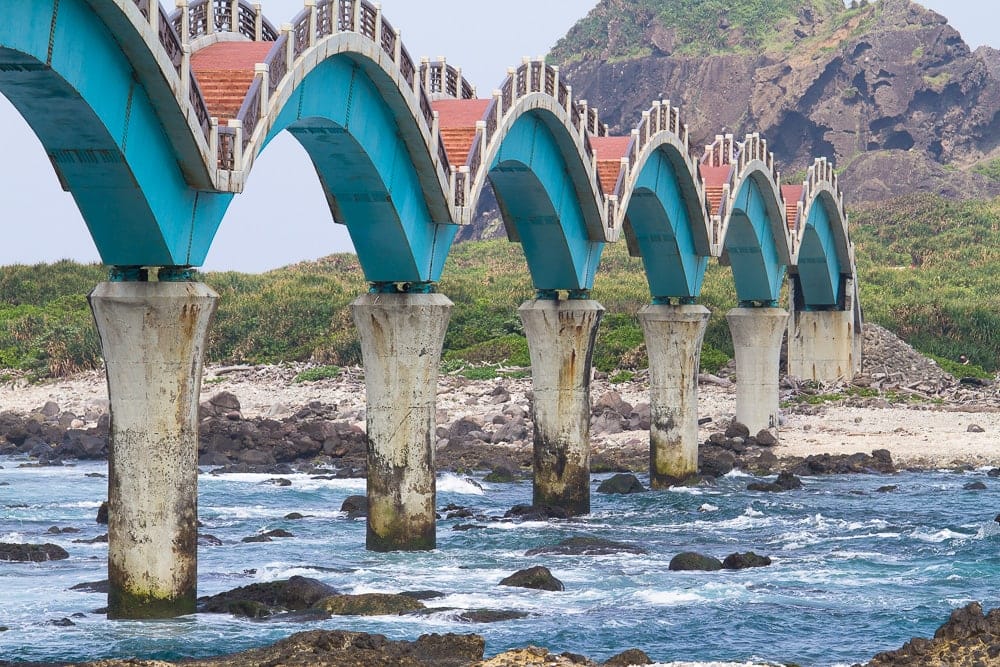
Xingang Fish Market, Chenggong

Just south of the Platform of the Three Immortals, Chenggong township (成功鄉) features the daily Xingang Fish Market (新港漁市場) in the early afternoon (usually starting at 1-2 pm). For a very traditional experience, you can watch fisherman auction their catches right on the docks of Xingang Harbor (新港漁港).
Spring (March to June) and October are especially busy times, when the currents bring huge amounts of fish past this part of Taiwan.
While passing by Chenggong, you can also consider stopping at the Amis Folk Center in Xinyi Village, dedicated to Taiwan’s largest aboriginal tribe. There are usually musical performances around twice per day.
Dulan Surfing Beach and Artists’ Village
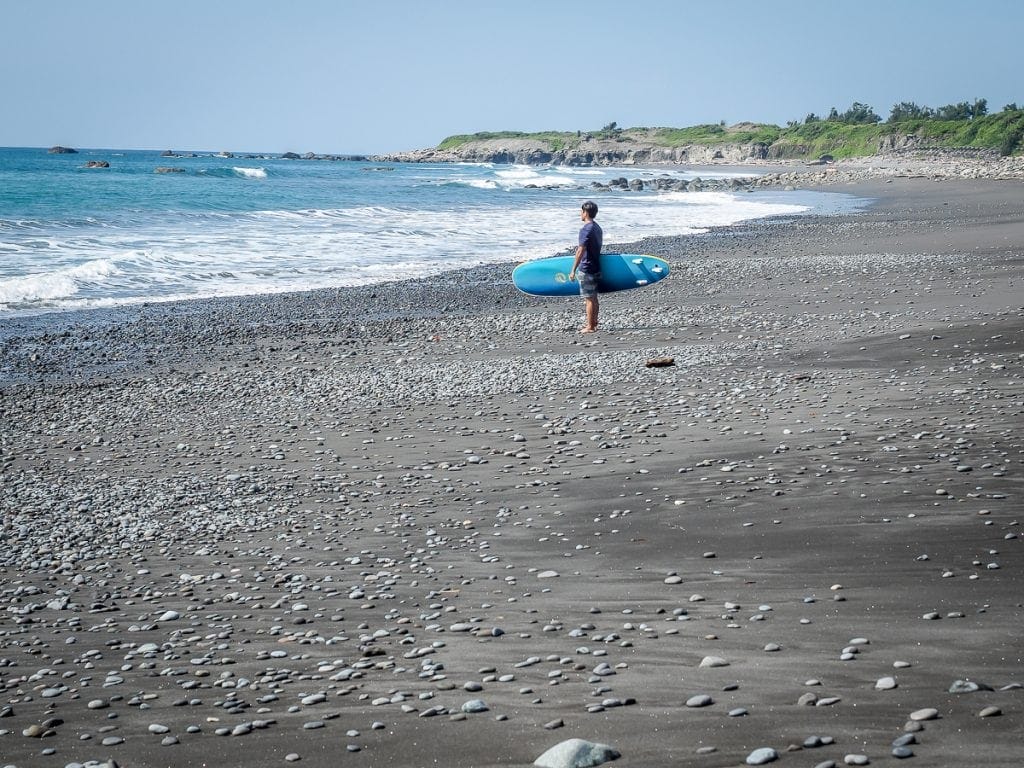
Soon after you will reach Dulan (都蘭) a small town known for its vibrant aboriginal and expat artists’ community. I enjoyed it so much that I wrote this entire separate article about Dulan surf town.
There are numerous hostels and cheap hotels (and English will definitely be spoken), making it an obvious choice for a halfway stop between Hualien and Kenting. You’ll also find a few foreigner-run restaurants along the highway, a local craft beer company, and regular musical performances and art exhibits on weekends, with the renovated Dulan Sugar Factory being a focal point of the scene.
There’s also decent surf at Dulan. Try the Dulan Surf Shop, or this surfing lesson offered at nearby Donghe.
Dulan has the best collection of guesthouses and hostels on Highway 11, making it the perfect place to spend the night (or days, or weeks) on your way from Hualien to Kenting.
Try the Groundnut Backpacker Hostel (see on Booking / Agoda / TripAdvisor ) or Travel Bug Bistro (see on Booking / Agoda / TripAdvisor) for cheap rooms.
Stone Party (see on Booking / Agoda / TripAdvisor) is an interesting B&B with modern design, while Pretty Dulan (see on Booking / Agoda / TripAdvisor) is great for families.
Dulan to Taitung City
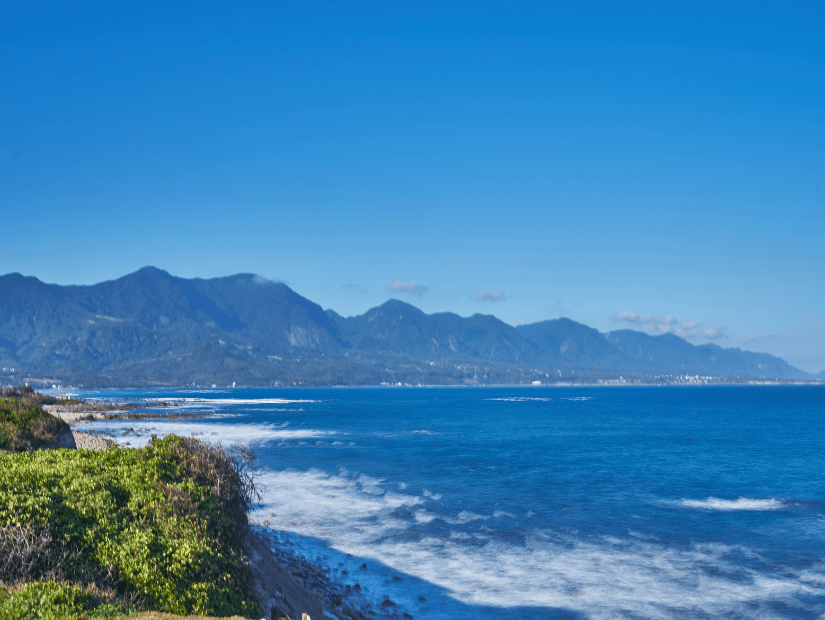
South of Dulan, you’ll find Water Running Up (台東水往上流奇觀), a curious attraction featuring a small stream that appears to run up a hill, Shanyuan Beach (杉原海水浴場), the coast’s second swimmable beach, Fushan Fish Reserve (富山漁港), where you can walk on the walks and see fish in coastal pools, Jialulan (加路蘭海岸), a seaside park with cool artworks on display, and Xiao Yeliu (小野柳), the south’s smaller version of one of the northeast coast’s most popular attractions, Yeliu.
You’ll also pass Fugang Harbor (台東富岡漁港), from where ferries depart for Green Island (see below).
Taitung City (台東市)
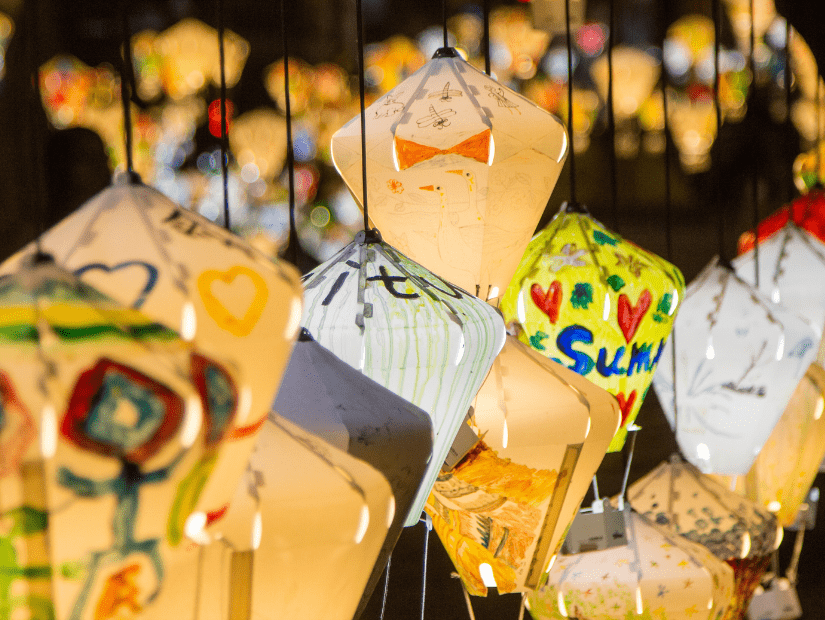
Highways 9 and 11 reunite in Taitung City. As much as I love Taitung, the real beauty of the county is in the countryside. Taitung City is small, spread out, and not particularly easy to explore with your own reals. Personally, I’d much rather spend the night in any of the rural villages I mentioned above, such as Chishang, Guanshan, Luye, or Dulan.
Still, there are enough things to see and do in Taitung City to justify spending a day. One of the city’s top places to hang out is Tiehua Village (鐵花村), an arts venue with regular events and performances, including concerts in the evenings. You can also visit Tiehua Village as a part of this Taitung City half day tour.
Other places to visit in Taitung City include Liyushan Park (鯉魚山公園), Taitung Art Museum (臺東美術館), the National Museum of Prehistory (千禧曙光紀念園區), and International Landmark Seaside Park (
海濱公園).
Begonia (see on Booking / Agoda / TripAdvisor) is a top-rated B&B if you do choose to stay in Taitung City.
The Offshore Islands
Two of Taiwan’s most compelling offshore islands are found off the southeast coast of Taiwan: Green Island (lüdao or 綠島) and Orchid Island (lanyu or 蘭嶼). Both islands require at least a few days to visit and some extra planning, and you’l want to avoid visiting them in winter, when most amenities shut down.
Also see my article introducing the best islands in Taiwan to visit!
Green Island (綠島)
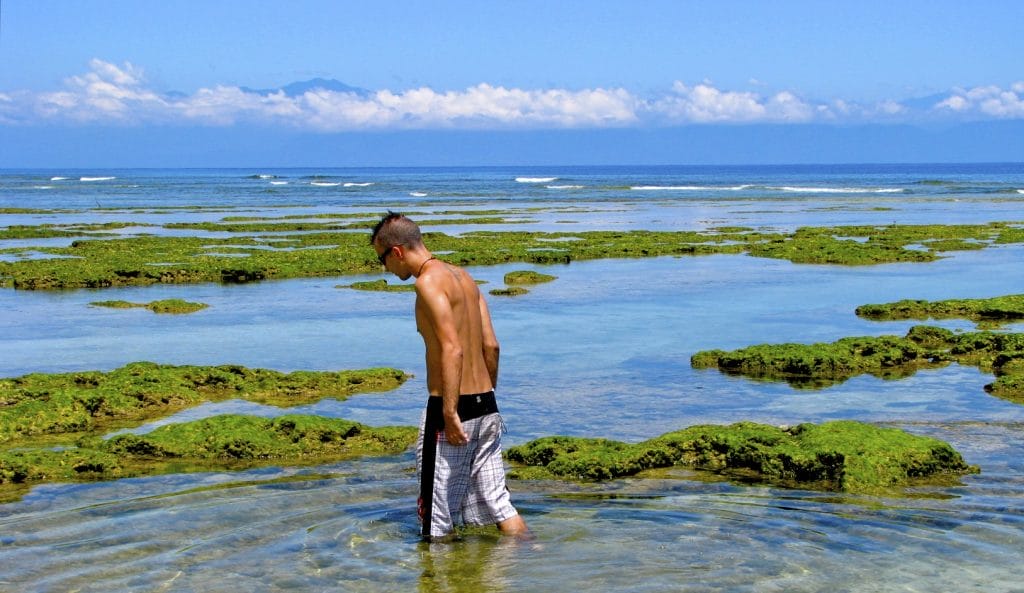
Green Island is easily one of my favorite places in Taiwan. It’s small enough that you can ride a scooter (rent your scooter here) all the way around it in 1-2 hours, but with all the beaches and breathtaking lookout points you could easily spend a whole day doing it. It offers some of the best scuba diving in Taiwan, and the gorgeous seaside Zhaori Hot Spring is one of only three saltwater hot springs in the world, and in my opinion is worth the trip itself.
I also must say that the 7-11 on Green Island, with it’s seaside balcony offering views of the mountains of mainland Taiwan on the horizon, easily has the best 7-11 view I’ve ever enjoyed. Like it or not, you’ll probably end up patronizing 7-11s multiple times during your Taiwan travels.
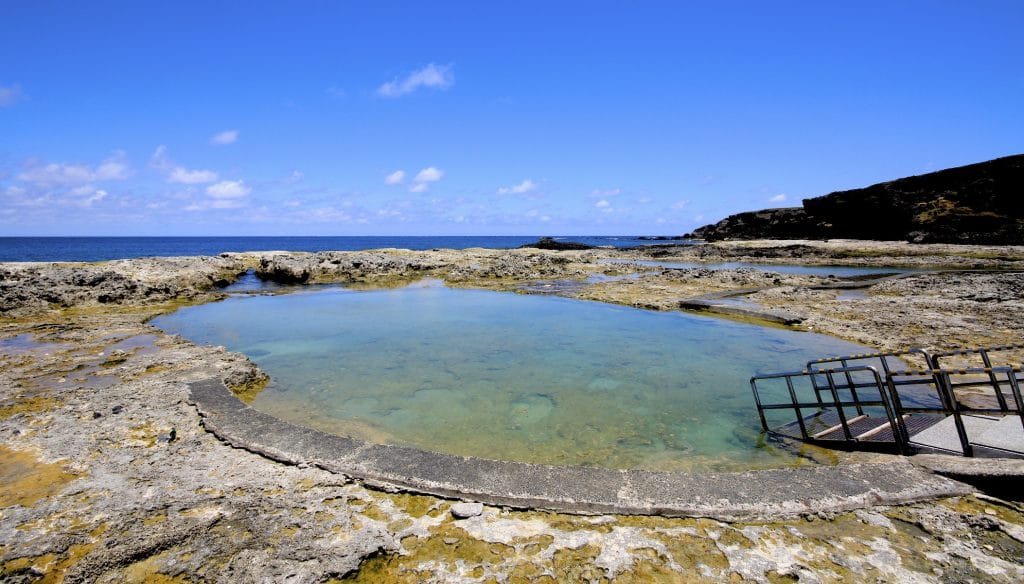
Daily ferries leave from Fugang Harbor (台東富岡漁港), a 15-minute taxi ride north of Taitung City, for Green Island (綠島 50 minutes). The ferries sail subject to good weather and are very bumpy, especially for Orchid Island, and you can expect to see many locals barfing into bags.
You can book your ferry tickets to Green Island here or here, or book a very convenient and reasonably priced all-inclusive Green Island 2-day or 3-day tour, which includes ferry tickets, accommodation, several meals, scooter rental, and a choice of activities (such as snorkeling or Zhaori Hot Spring entry ticket).
If you want to do it on your own, Happy Dive B&B (see on Booking / Agoda / TripAdvisor) has gorgeous rooms right on the coast, Moon’s Diving House (see on Booking) is a cheaper option, while 70 Garden House (see on Booking / Agoda) offers dorms.
Try here to book an Advanced Open Water Boat Dive. Like anywhere, make sure that you choose proper scuba and snorkeling gear for your diving experience!
Orchid Island (Lanyu/蘭嶼)
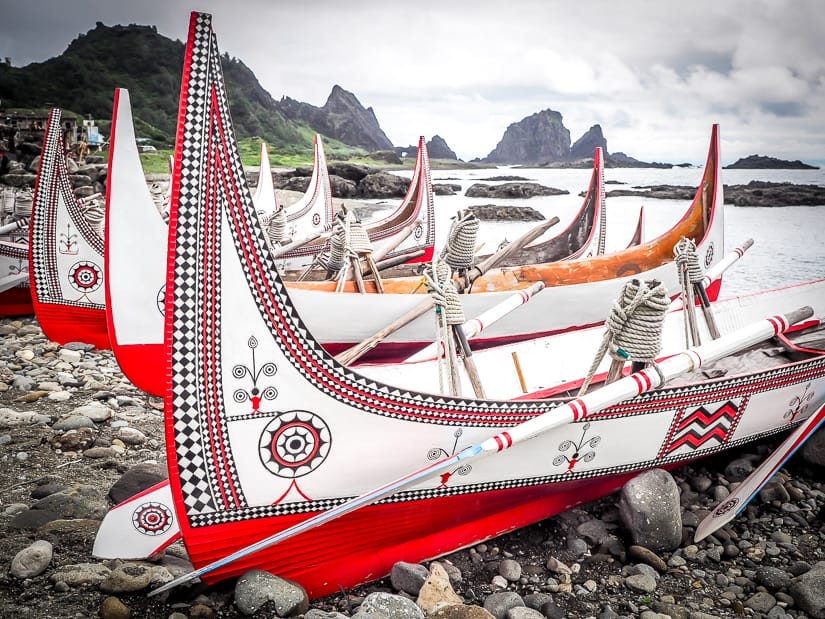
Orchid Island is one of the most remote corners of Taiwan and home to Yami (Tao) tribe, the most isolated and removed from Taiwanese mainland culture of Taiwan’s indigenous tribes. They are famous for their beautiful carved canoes, underground homes that protect them from typhoons, and Flying Fish Festival, which takes place for several months in spring. You can even taste flying fish in Orchid Island’s only night market, definitely one of the more difficult items to check off this bucket list of 101 Taiwanese foods to eat!
Planning a trip to Orchid Island can be a little challenging, but I have all the information you could possibly need to plan your trip in my complete guide to Orchid Island, including where to stay there and how to rent a scooter on Orchid Island.
The easiest way to get to Orchid Island is to take the train or fly from Taipei to Taitung, then take the 3-hour ferry from Taitung or Kenting, or a short flight on DailyAir (you can only buy tickets 2 months in advance and they sell out quickly; site is mostly in Mandarin). To save the hassle or trying to arrange everything, you can take advantage of this convenient and reasonably priced 3-day Orchid Island package deal.
Route #3: Off-the-Beaten Track on County Road 193
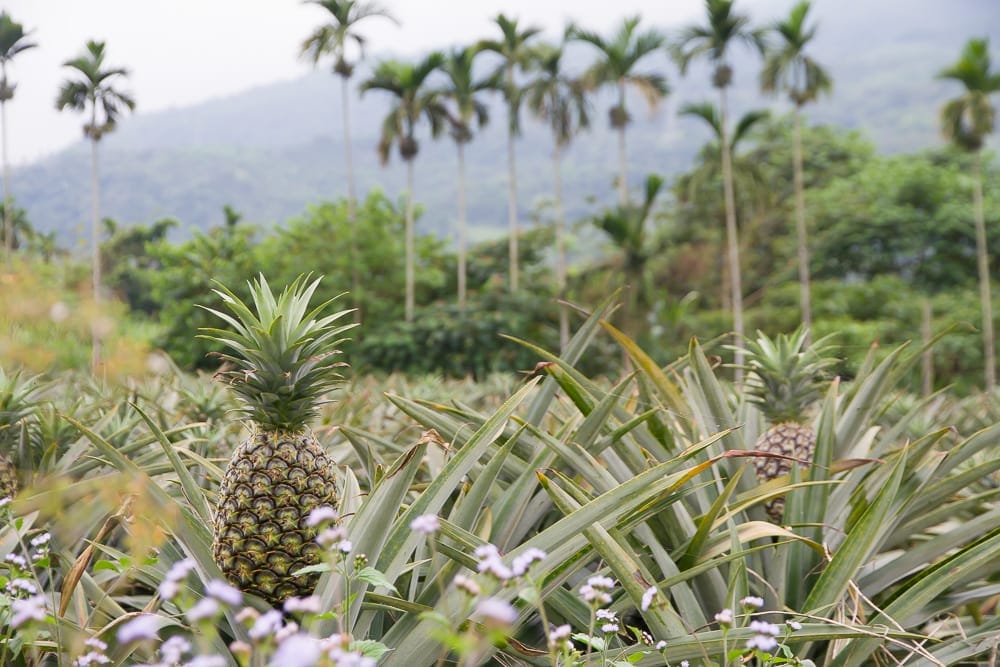
If you want to get off the main highways and like to have the road entirely to yourself, or perhaps you don’t care about the sights listed above or simply want to try a new route, then county road 193 is for you. This elevated, winding road runs though the lower hills of the Coastal Mountain Range between highways 9 and 11, sticking closer to the former in the southern half.
To find it first follow highway 11 as it branches off from highway 9 in Hualien City. As soon as you cross Hualien Bridge, turn right instead of following the main highway to the left. The road quickly ascends, offering stunning views over Hualien and later the Great Rift Valley.
The road is very winding so it’s not for those who get carsick easily. There are no sights per se, but if you love driving through the forest for hours breathing in the fresh air and not seeing another soul, then it’s great. The main attraction is spotting all kinds of fruit growing in the roadside plantations; papaya and pineapple were in season when we visited.
You can connect back to highway 11 about a third of the way down by turning left on the slow-moving 11甲, or back to the much closer highway 9 at a few different points, and the 193 will take you as far as Yuli, one of my recommended halfway point stops between Hualien and Kenting on Highway 9.
We spent about 6 hours scootering this route from Hualien to Guanshan in Taitung, with few stops, to give you a general idea. It’s probably about how long you’d spend on the Highway 9 route, if you factor in the sightseeing stops. There are pretty much no shops or restaurants along the way, so you’ll want to either bring some snacks or reconnect to Highway 9 at some point to find something to eat.
Route #1 from Taitung to Kenting
For some, Taitung City may be the end of their east coast journey. But if you want to extend your trip all the way to the beaches of Kenting National Park at the southern tip of Taiwan, there are two ways to go about it.
Route #1 is the faster one, which involves following Highway 9 along the coast and then across to the west coast of Taiwan for the final leg down into Kenting. The route is the same if you take the train from Taitung to Fangliao, then transfer onto a bus to Kenting (1 hr). Route #2 (see next section) is a slow route on small roads, suitable for scooter riders only.
South of Taitung City
Highway 11 end when it rejoins with Highway 9 just south of Taitung City. Highway 9 then contiues south along the coast.
This whole area south of Taitung is famous for the custard apple (釋迦), also known as sugar apple or Buddha’s head fruit, and you can also look out for the Taiwanese hybrid pineapple custard apple (鳳梨釋迦). The flesh of this ultra sweet, pudding textured fruit literally melts in your mouth. They go for up to NTD100 for a single large one, but are so worth it. You’ll see them for sale EVERYWHERE, and you may even see a custard apple mascot or two.
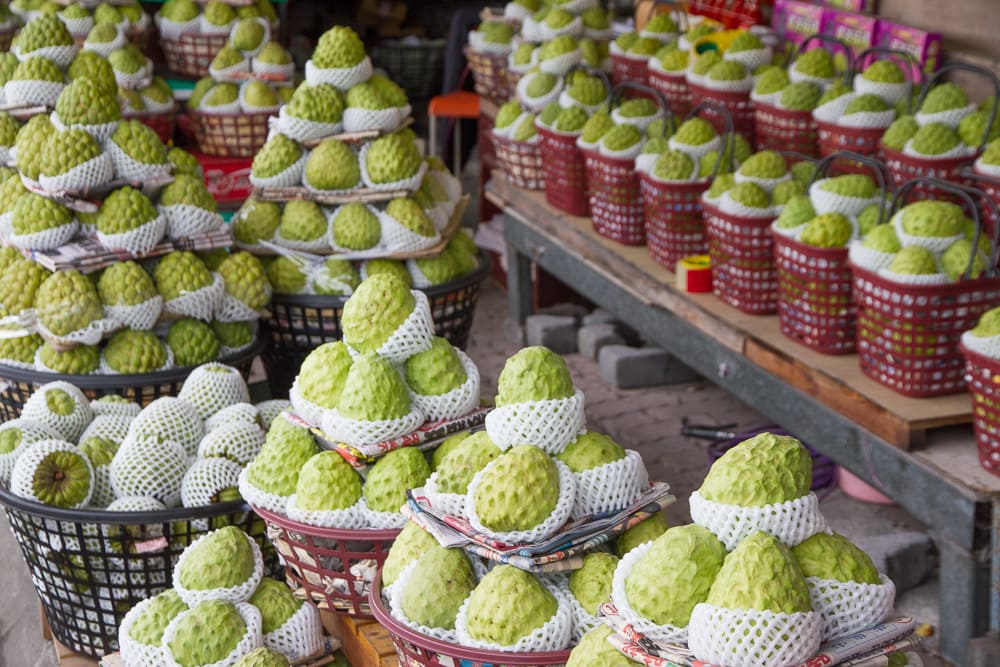
Chihpen/Zhiben Hot Spring (知本溫泉)
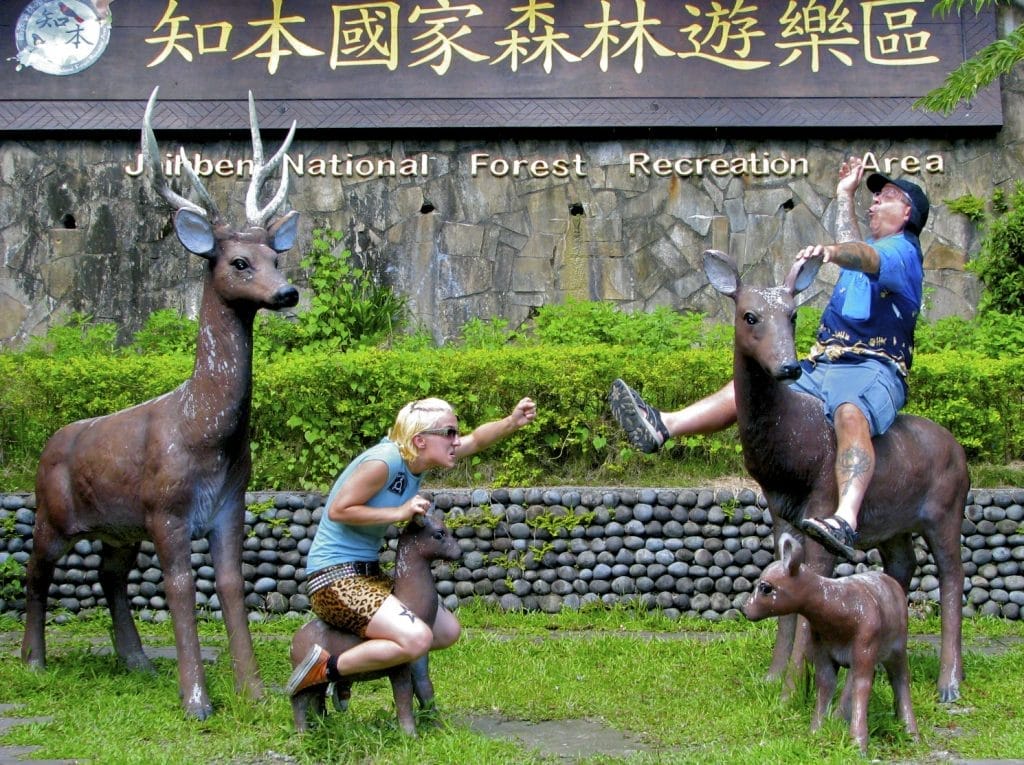
A small detour off just before the point where highways 9 and 11 meet will bring you to Zhiben Hot Spring and National Forest Recreation Area.
There you’ll find the usual assortment of hot spring hotels if you’re in need of a hot soak. Cheng-Ping (see on Booking / Agoda / TripAdvisor) is an excellent choice for an overnight stay. The National Forest Recreation Area didn’t impress us when I visited with my family many years ago, but we made up for it by riding some local wildlife (see above photo).
Taimali Beach (太麻里)
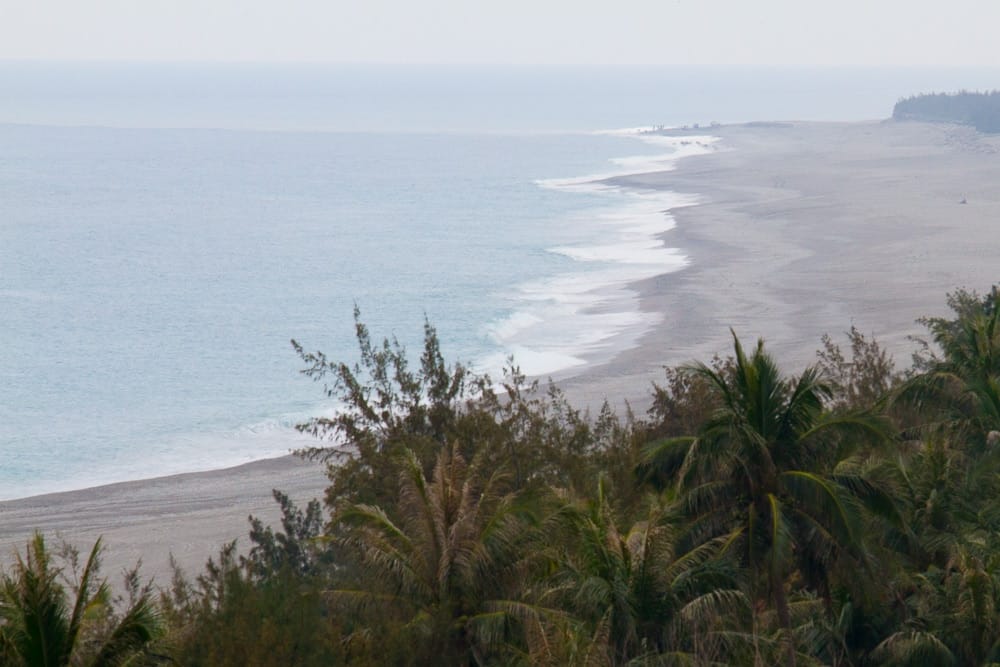
Next up, Taimali Beach (太麻里) is an insanely long stretch of beach that usually has few to no people on it. You’ll need to hunt around to find a way to get down to it.
After that, you’ll pass turnoffs for Jinfeng and then Jinlun Hot Springs. We explored up both roads by scooter but only found a few rustic developed hot spring resorts. We asked around about the natural springs mentioned in the Lonely Planet but didn’t have much luck finding them, though a comment on this blog indicates they might be destroyed. I would say give this a miss in less you are truly interested and have the time.
Duoliang Railway Station (多良觀光車站)
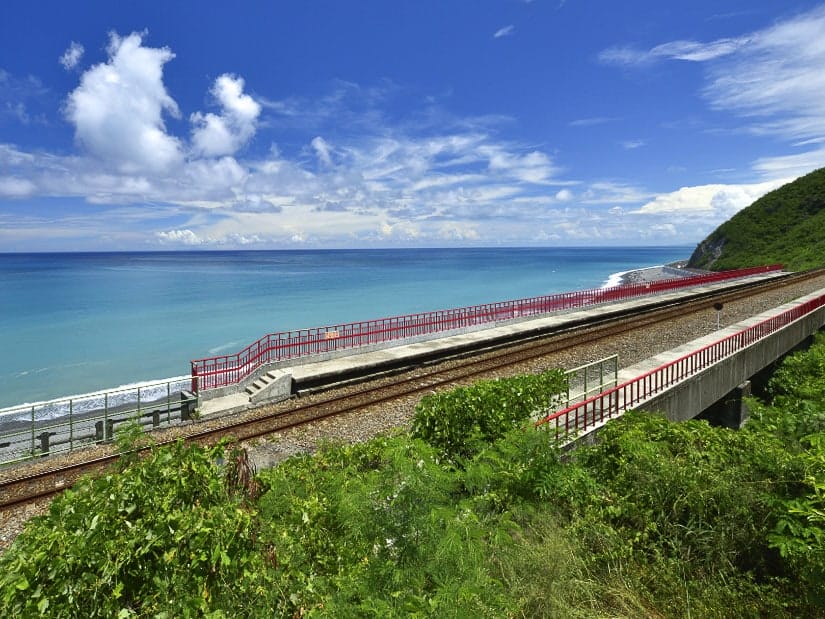
Duoliang is considered one of the most beautiful railway stations in all of Taiwan, backed by the sea at the southern end of Taimali beach, and luckily it’s right beside Highway 9 so it’s easy to stop for a picture.
After Duoliang, the highway continues along the coast for some time, then ascends quickly in a death-defying portion for wild ocean views.
Final Leg to Kenting National Park
When you reach Daren (達人), Highway 9 veers inland and crosses to the west coast in only about 30 minutes, then shoots south to Kenting National Park at the southern tip of Taiwan. This pleasant section on the west coast offers views over small deserted beaches before reaching Hengchun, the southernmost township in Taiwan, which is technically within Kenting National Park.
Hengchun features the best preserved old city wall in Taiwan, with four main gates still intact that are just off the main highway, so it’s worth a stop if that interests you.
After Hengchun, and as you get closer to Kenting Village you’ll see more and more tourist facilities, such as aquariums, mini amusement parks, go-karts, haunted houses, and so on. I’m not going to cover Kenting in detail here; we’ll save that for another day.
Traveling back from Kenting to Hualien (Kenting to Taitung and Taitung to Hualien), all the info is the same as I’ve outline here, but of course in reverse.
Route #2 from Taitung to Kenting
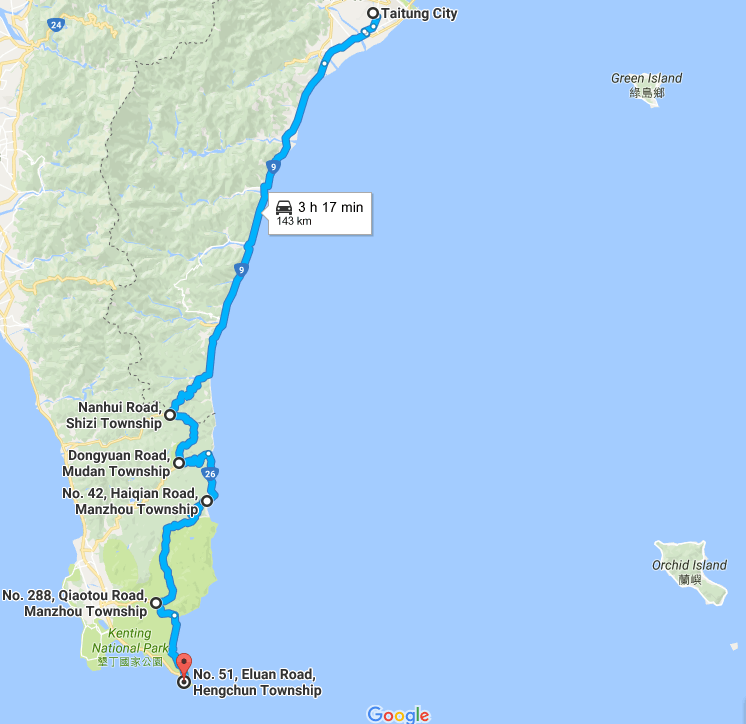
A second option for getting from Taitung to Kenting is the slow route that mostly sticks to the east coast. This is a remote drive for motorcycles or scooters only. You’ll pass very few settlements, and see almost no people, but the road itself is very smooth the whole way, making for gorgeous riding. Note that this route will take you into Kenting National park from the east side, while route #1 will take you in from the west side. This can make a big difference, as the national park is quite large, and it depends where you plan to stay in Kenting.
This route is definitely a few hours slower, especially since there aren’t many notable stops on Route #1. By scooter, it’s going to take you a solid 4.5-6 hours to get from Taitung to Kenting on this route, while route #1 should only take about three hours in total.
So if you are in a rush to get to the beach, skip this one. But if you want to enjoy 3-4 hours (after the turnoff described below, as opposed to 1-2 remaining hours to get to Kenting on the main route) on an incredibly beautiful, traffic-free road, and see some sand dunes (!) and some amazing views on the final approach to Kenting, then I would highly recommend this route.
To begin, follow the main route south from Taitung on Highway 9 outlined above, but then about 10-15 minutes up Highway 9 after it veers inland from Daren, watch for the little turnoff to County Road 199甲, which also happens to be right on the border between Taitung and Pingtung (屏東縣) counties. There is some kind of derelict building right at the turnoff which seemed to be an attraction worth stopping at for local tourists but we couldn’t figure out why. It is now labeled Shouka Biker Rest Stp (壽卡鐵馬驛站) on GoogleMaps.
After you turn left onto the 199, the road winds its way down to the sea, meeting yet another wide open beach with nobody or nothing on it. The road changes into the 26 along the coast, and then the 200 when it veers inland again.
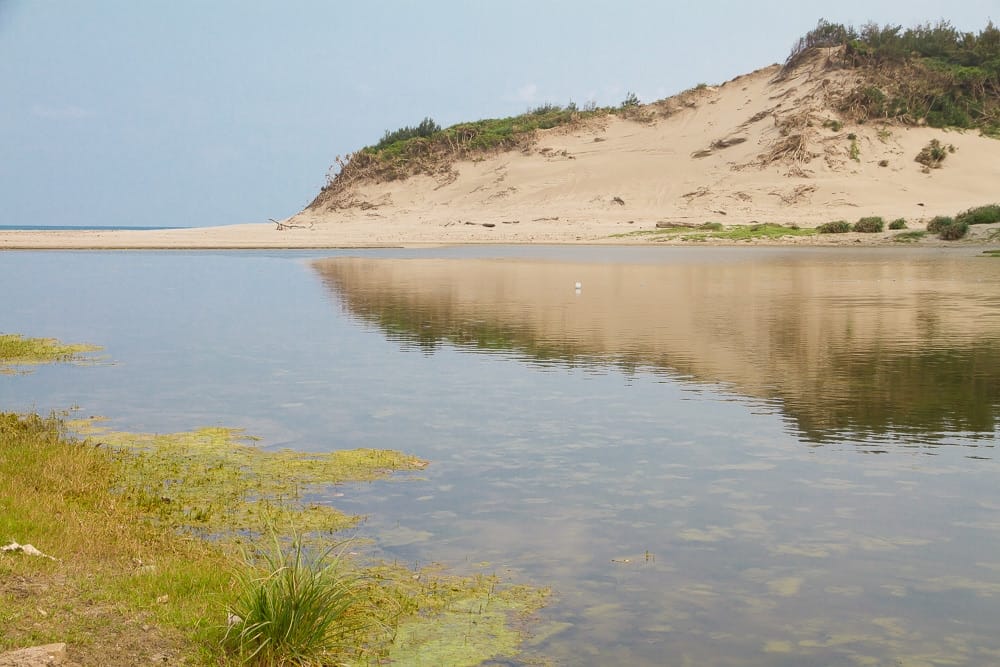
Just after going inland again, you’ll come across one of the more unexpected sights on this journey, a region of sand dunes called the Gangzi or Jiupeng Desert (港仔/九棚大沙漠). There are dune buggies for hire, and when we were there, there wasn’t a single other tourist to be seen, despite the relative proximity to Kenting’s main tourist area and the fact that it was the start of a long weekend.
After that the road seems to go on for some time, with the landscape gradually changing from the dense subtropical rainforest found in most of Taiwan to the somewhat drier, hilly landscape characteristic of Kenting.
You’ll need to turn onto 200甲, bringing you to the coast again, where the road once again becomes the 26. 5-10 minutes before reaching the southern tip of Taiwan, you’ll pass more sand dunes at Fengchuisha (風吹沙) in Longpan Park (龍磐公園), where sand sometimes blows right onto the highway.
The views here of cliffs and sand dunes spilling down to the sea are, in my personal opinion, the most beautiful and dramatic on the entire east coast, along with the Qingshui Cliffs in Hualien.
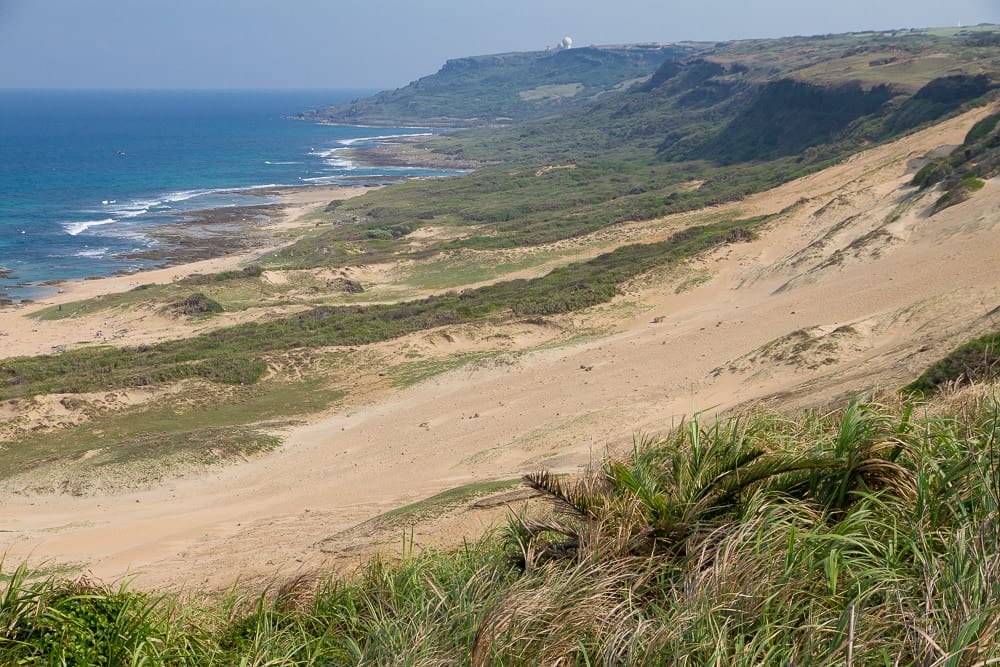
Kenting National Park
Congratulations! You’ve made it to the southern tip of Taiwan, Kenting (墾丁), home to some of the top beaches in Taiwan! Read my Kenting guide and my most recommended hotels and resorts in Kenting for planning your stay there.
If you arrived on highway 9 (route #1) coming in from the west, then you’ll first pass a beach popular with locals, South Bay, before getting to the main strip of Kenting Village, the party town, night market, and tourist center of Kenting.
If you arrived on the backroads route #2 coming in from the east, shortly after Longpan Park, you’ll hit the Eluanbi Lighthouse at the Southern tip of Taiwan. After that, you’ll pass a great beach at Sail Rock before reaching Kenting village.
Well, that brings us to the end of my (probably far too long) east coast Taiwan guide. If you’ve read this far, then congrats! You receive a gold star. Please feel free to comment below with any updates, questions, or to share your experiences visiting the east coast of Taiwan!

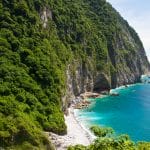
The 9 is the least congenial route down the Rift Valley. I always avoid it.
Travelers interested in prettier, emptier alternatives should take the 193 instead of the 9 as Nick recommends. If you are biking, it is about 90 kms from Hualien to Yuli. On Day 2, do not take the 9. It’s really bad south of Yuli. Take the Zhuofu Industry Road all the way to the 20A, then swing back to Guanshan on back roads, easily found on Google maps, then cross the 9 and head east of the 9 to the 197. The 197 is now paved along its length and is a lovely, almost empty road. Will involve some climbing if you are biking, but its much better than the 15 kms of gravel I did several years ago.
For sometime now, I want to go back to Taiwan for a road trip to Highway 9, 11 and 14. Memories from last year passing the scenic coastal route by bus to Taitung is hauntingly beautiful. The feelings stayed for too long that despite traveling to my favorite country in the world, Japan I want to go back to Taiwan.
I am always a solo traveller, I don’t want to drive and i don’t know how to drive a a scooter or bike and I certainly can’t rent a car by myself for the price it entails. Therefore, public transportation is ideal but can these routes accessible by bus?
Thanks for your comment, Hazel! Yes, I’m pretty sure that buses cover all of these routes. Trains are probably faster and more reliable though. However, both buses and trains will take you to the main towns along the route. But the truth about small towns in Taiwan is that most of them are pretty ugly and noisy with not so much to see. It’s really the countryside, mountains, coastline, waterfalls, beaches, and so on that are the best parts of these two highways. You could certainly see a few things, but not would miss out on A LOT, I mean like 90% of things mentioned in this article, if you didn’t have some kind of transportation.
Hi NIck, I was wondering when you say “international driving license” ( when renting a scooter), do you mean an IDP or international driving license. For example, I have a Thai drivers (motorcycle and car) license and a California drivers license (car). Will that be sufficient to rent a scooter in most places – East Coast from Hualien to Kenting ? Probably start in Hualien. I don’t think I will have time to get an IDP from the US by mail (supposedly takes 4-6 weeks). Also, Are there cheap hotels along the way? By cheap I mean 400 -500. I earn Thai baht and am on a tight budget. Trying to figure out if I can do this trip. Looking to stay for approx 2 to 3 weeks and surf all the coast. Thanks for your help.
Best, Michael
We (two reasonably active 65+ travellers) will be spending a month in Taiwan later this year, and your blog posts have had a huge influence on the itinerary that I’m developing. I have now allocated six days, but could be more, to the East Coast (after Taroko), as the landscapes you describe are landscapes I love. We will be dependent on public transport, but I’m assuming we can reach Juli from Ruisui, and later Gaunshan and Luye, using trains, maybe buses, and maybe with guest house pick up? I realise that we will be limited without wheels, but surely if we base ourselves two+ nights in each town, we can walk/cycle the neighbouring countryside? Anyway, thank you for these detailed travel stories. They have been a pleasure to read. 🙂
My husband and I will have a whole 5 weeks in Taiwan at the end of this year, and I have allocated – thanks to all I have read, your blog included – a week to the East Coast. We hope to manage using just public transport. Is this going to be difficult? We might skip Kenting, but in an ideal world, we would have two days in each of a few different towns, and could hike/cycle/get to know the area. Is travel between your recommended overnight stops also possible by train/bus?
Thanks for an amazingly informative website!
Hi Nick,
I m french and i have found your website when i was in Taiwan this july : it helped me and my 3 kids family a lot during our island tour trip. Thank you so much !
I was very suprised and sad each time i founded a beach on my way (along the east coast and even in Tainan) because almost every beach was dirty (a lot of trash on the sand), only Dulan bay beach and Baisha near Kenting were clean! No one who recommanded me to visit Taiwan had ever mentionned that problem, so i m asking you: are the beaches usually dirty ? Is it people who throw trash on the sand or is it because of the tide which reject trash on the sand ? Thanks for answering!
Hi Clemence, and thanks for you comment!
Yes, this is a sad fact about Taiwan. There is a serious trash problem. It actually used to be much worse; in the past some travel books about Taiwan even mentioned that the country used to be jokingly called “Garbage Island”.
I think most of the trash on the beaches is not from people who visit the beaches. It is people in the cities and countryside who throw trash on the ground or leave piles of it everywhere. A lot of it ends up in sewers or rivers from wind or lots of water from rainstorms or typhoons, and eventually it all ends up in the sea and then gets washed up onto the shore.
In summertime, thousands of people around Taiwan go to riversides in the mountains to have BBQs, and many of them just leave the trash behind, or make huge piles of it by the parking area, assuming someone else will pick up after them, but of course it all eventually ends up the river. One of the saddest things I ever saw was a local family having a BBQ on a bridge on a small country road overlooking a beautiful stream valley. At the end of the meal, they packed up all their garbage in a huge plastic bag and threw it off the bridge into the stream far below.
It’s something that makes me really angry about this country, and I don’t think enough is being done to change people’s bad habits, though there are some great local groups that organize beach cleanups, and the country is currently in the process of banning plastic bags, straws, etc, so things are gradually improving.
Hi Nick, I’m really interested by route #2 from Taitung to Kenting. You mentioned that this coastal road is only accessible by scooter/bike. Since I’m travelling with young kids and luggage, it’s not an option on our case. 100% confirmed that I won’t be able to find a driver to make this stunning leg? Thanks for your help and for all the precious advise found here. A true bible. Best
I ask myself the same. We will go by car and would like to take the scenic route #2 from Taitung to Kenting. Did you go there by driver in the end, Alban? How did it go. Thank you!
Hi Nick, been doing a deep dive on your articles and your information is fantastic, thank you!
Going to be travelling to Taiwan end of Februrary and early March. My partner and I are planning on renting a car in Hualien. I am wondering where you think it is best to stay when driving from Hualian down to Kenting as an in between overnight stay; Chishang or Dulan? Thanks so much!
I’d vote for Chishang. The scenery around there is so beautiful, and riding a bicycle around Chishang probably my favorite thing to do in all of Taitung. Dulan on the other hand is more like the kind of place young backpackers or surfers might want to hang out for several days or weeks. The town itself is not so special, it’s just a bunch of hostels, shops, and restaurants along the highway. The beach is far to walk if you don’t have a scooter. There are bars and art shows on certain nights, so it’s a better place if you want to meet other travelers, especially young/surfer/hippie kind of travelers.